The Brown Count y A ntique Mall


















S ampler a t the Nashville Chop House







Blue Oc tober a t Music Center



FIELD NOTES
MUSINGS







FREE March/April 2023
Have you tried our Meyer Lemon Extra Virgin Olive Oil with asparagus? It’s springsational!


fresh & flavorful!
wild & tasty TIP

Combine Meyer Lemon EVOO with honey and garlic and coat asparagus before roasting. Sauté asparagus in Meyer Lemon EVOO and a little lemon zest and sea salt. Drizzle Meyer Lemon EVOO over already sautéed or roasted asparagus.
We have curated a flavorful collection for your tasting pleasure with plenty to offer for foodies, the experienced cook, or the novice. It goes well beyond the high-quality olive oils and balsamics we built our reputation on. We’ve added jams, pastas, dipping oils, salsas, sauces, and much more. Come in for a tour of tastes and let us be your guide. You’ll be wild about our shop. Shop us online from anywhere, anytime at www.thewildolive.com
We’ve been bringing great taste to you since 2012 from our inviting little shop in the heart of Brown County, Indiana. www.thewildolive.com | 37 W Main Street, Nashville, Indiana 47448 | (812) 988-9453
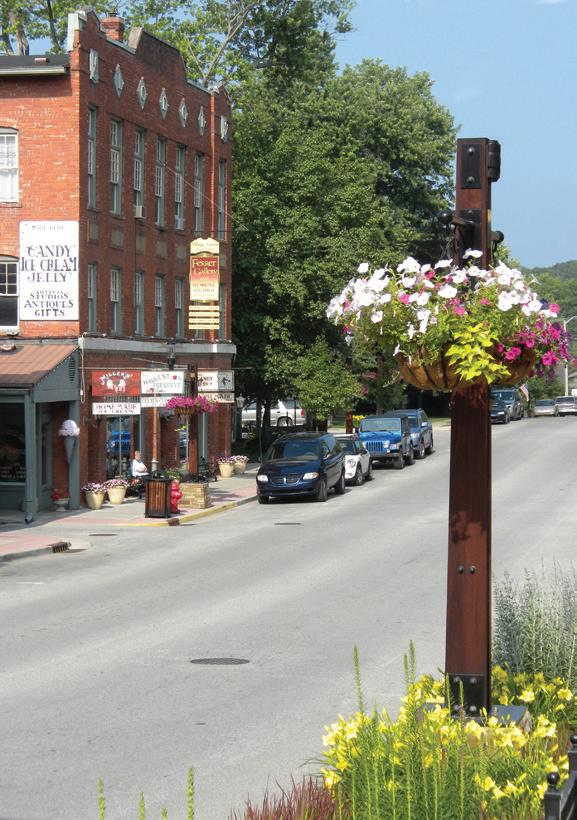
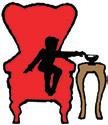


Village Green Building Celebrating over 100 years in nashville The Nashville you came to see and love… Where you can see the work of local artists whether it’s ice cream, candy and fruit preserves made the old fashioned way or the artwork of local artists and craftsmen. · first floor · Homemade Ice Cream Homemade Candies Homemade Fruit Preserves · second floor · Antiques · Art and Craft Galleries Working studios of local artists Homemade Ice Cream Yes, we really do make it ourselves! 812.988.0815 NASH VILLE I N D I A NA Fine Homemade Chocolate Candies and Fudge Gourmet Caramels Over 50 Flavors of Salt Water Taffy 812.988.7606 The Candy Dish Homemade Fruit Butter Gourmet Food Cookbooks · Cookie Cutters Postcards · Greeting Cards Kitchen Gadgets Galore Giftware · Tea and Teaware 812.988.7606 Functional and Fine Art Made in Indiana 812.988.6675 theHarvest Preserve 61 West Main s treet · nashville, i ndiana

at Valley Branch Retreat eXploreBrownCounty.com ZIP LINE TOURS • OFF-ROAD TOURS PAINTBALL • ARROW TAG ARCHERY GAMES MOUNTAIN BIKE / HIKING TRAILS CAMPING & CABINS WEDDINGS • EVENT HALL • OUTDOOR STAGE 812.988.7750 info@eXploreBrownCounty.com 2620 Valley Branch Rd • Nashville, IN 47448 GPS 39.1638298 / -86.1485959 ® CORPORATE RETREATS & TEAM BUILDING













Dr. Lisa Baker, DDS Fireplace Center Bluestone Tree BEAN BLOSSOM HELMSBURG BELMONT PIKES PEAK STORY Brown County State Park Lake Lemon Monroe Reser voir Yellowwood State Forest Sweetwater Lake Cordry Lake 135 135 46 46 SaltCreekRd Hamilton Crk Rd RdgHelmsbur BrownCo.TireBrownCo.AntiqueMallBrownCo.WineryGNAWBONE Mike’s Music and Dance Barn toBLOOMINGTON to MORGANTOWN T.C. Steele State Historic Site ClayLickRd Flower and Herb Barn Farmhouse Café OldSR46 CHRISTIANSBURG P oplarGrove Christiansburg Rd STONE HEAD MORGANTOWN Antiques Co -op Green Hill Diner Grandpa Je ’s Trail Rides BLOOMINGTON Brown County N to BLOOMINGTON Monroe Music Park & Campground GATESVILLE Dining Lodging/ Camping Musical Enter tainment Ar tist and/or Galler y Craftsman Mike Nickels Log Homes Oak Grove Rd Lightspinner Studio OwlCreekRd . NASHVILLE Mt.LibertyRd NASHVILLE MAP ON PAGE 6 45 ELKINSVILLE CountryClubRd Doodles by Kara B arnard eXplore Brown CountyValleyBran c hRd. TRAFALGAR The Apple Works Recreation Rosey UncommonBolte’sGourd Studio Upper Bean Blosso m Sprunica Rd Vaught Rd. Mar tinsville NASHVILLE Bloomington Columbus Indianapolis Morgantown Edinburgh Franklin Nineveh 135 46 46 37 252 I-65 31 135 Trafalgar GeneralHelmsburgStore Ye llow w ood Rd Kelp Grove Rd. Green ValleyRd HillsO’BrownVacationRentals Brick Lodge Abe Martin Lodge Hoover Rd South Shore Dr. Plum Creek Antiques Hard Truth Distiller y Snyder Rd Hear tland Tattoo Brownie’s Bean BlossomRestaruantFamily Annie Smith Rd Harmony Tree Resor ts Sycamore S aloon BrownCo.KOA Friends O’ Mine Campground Bear Wallow Distillery to COLUMBUS Away A Day RV Campground












MOUND STREET MAIN STREET GOULD STREET JEFFERSON STREET MOLL Y’ S LANE HONEYSUCKLE LANE ROBERT “BUCK” STOGSDILL WAY OLD HICK OR Y LANE ARTIST DR ST SR 135 N VAN BUREN Hotel Nash ville C our thouse Brown Co Ar t Galler y Brown Co . W iner y P ioneer V illage Museum C ounty O ces TO HELMSBURG6 MILES TO BEAN BLOSSOM & MORGANTOWN Heritage Mall OldSR46 Brown Co P ublic Librar y O ce Iris Garden Comple x T ouch of Silv er Gold &Old LOCUST LANE J.B. G oods/ Lif e is Good Village Green L og Jail Head Ov er Heels Masonic Lo dg e IHA Colonial Bldg . Big W oods Village Brown Co . Histor y Ce nter Miller ’s Ice Cream The W ild Oliv e Spears Galler y Brown Co . Rock & F ossil Shop The Candy Dish The Har ve st Pr eser ve B3 Galler y Redbud Te r. Juls Etc. Health F or U LJ il Brozinni P izzeri a W eed Pa tc h Music C ompan y RE/M AX T eam Brown Co . Ar t Guild C opperhead Creek Gem Mine Heritage Candy Stor e Iris Garden C ottages & Suites C ommon Grounds Co ee Ba r Moonshine Le ather F allen L eaf Books No rt h House The Nash ville House Zieg L eDoux & Associate s Michael ’s Fl owers Hoosier Ar tist Galler y Big W oods P izza
Me n’ s To y Shop W oodlands Galle ry to4-H
Abe ’s Corner To o Cu te B outique & Hidden Getawa y Doc T ilton House W ishful Think ing Nash ville Chop House Carpente r Realt y Scr oggins T eam Naughty Do g Books Holly Po ts Stonewar e
toHardTruthDistillery
Fairgrounds









OLD SCHOOL WAY JEFFERSON STREET HONEYSUCKLE LANE VAN BUREN ST SR 135 N Antique Alle y FRANKLIN STREET Nashville Indiana PIT TMAN HOUSE LANE C ornerstone In n Ar tists Colon y Franklin Squar e Bone AppetitBakery S alt Creek P ark Bear Hardwar e SR 46 TO CO L UMBUS16 MILES Hoosier Buddy Coachlight Squar e W ASHINGT ON STREET PA T REILL Y DR SR 46 TO BL OOMINGT ON16 MILES map not to scale N C OUNTY MAP ON PA GE 5 C ountr y Heritage W iner y Nash ville BP Calvin Place P ark ing Rest Room Dining L odging Musical Enter tainmen t Ar tist and/or Galler y Theatr e Craf tsman Doodles by Ka ra B arnar d Nash ville Express Brown Co C ommunity YM CA Seasons Hotel & Ev ent Ce nter Lif e is Good JB Goods Th e Salvation Ar my Ar tists C olon y In n Nash ville F udge Kitchen Brown C ounty IGA New L eaf Am y Greely P ossum Tr ot Squar e Brown Co Playhouse 58 South Apparel Rhonda Ka y’ s Out of the Ordinar y and Hickor y Ba r Sc hw ab ’s F udge Casa Del So l Back to Back Thrif t Shop C ommunity Closet House of Jerk y Moondanc e V acation Homes Jack & Jill Nut Shop Brown Co Craf t Galler y Old McDurbin Gold & Gift s Clay Purl Brown C ounty Ey e Care The To tem P ost Brown Co Music Ce nter Brown Co Health & Livin g Nash ville Spice Co . Pr ecise Books & Pa yroll Blue Elk Fa mily Clinic Brown Co Massage Brown C ounty In n V isitors Ce nter Raft er s Larr y Sanchez • Misty Sanchez The To y Chest The Fe rguson House Bistro & Ba r Brown Co Model Tr ain s The Chee ky Ow l Kith & Kindred Redhead Apothecar y



8 Our Brown County • March/April 2023 Brown Co Rock & Fossil Shop ........ 21 The Cheeky Owl ............................... 62 Clay Purl............................................. 42 Head Over Heels .............................. 19 Holly Pots Stoneware ...................... 45 Hoosier Artist Gallery ..................... 22 Kith & Kindred Gifts......................... 25 Men’s Toy Shop ................................. 29 Michael’s Flowers ............................. 18 Moonshine Leather ......................... 18 Nashville Spice Co............................ 67 New Leaf ............................................ 19 Redhead Apothecary ...................... 55 Rhonda Kay’s .................................... 46 Spears Gallery .................................. 22 C. Steele Art ...................................... 66 The Totem Post ................................. 13 The Toy Chest ................................... 57 Uncommon Gourd-Rosey Bolte .... 18 Wishful Thinking .............................. 62 Woodlands Gallery .......................... 19 ENTERTAINMENT/MUSIC Brown Co Inn .................................... 14 Brown Co Music Center .................. 39 Brown Co Playhouse ....................... 56 Copperhead Creek Gem Mine ....... 21 Country Heritage Winery ............... 43 Hard Truth Distilling Co .................. 23 The Nashville House ........................ 22 Sycamore Saloon ............................. 33 FOOD & BEVERAGE Abe Martin Lodge ............................ 56 Artists Colony Inn ............................ 25 Bear Wallow Distillery ..................... 63 Brown Co IGA ................................... 60 Brown Co Inn .................................... 14 Brown Co Winery ............................. 24 Brownie’s Bean Blossom Rest. ....... 51 Brozinni Pizzeria .............................. 46 The Candy Dish .................................. 3 Casa Del Sol ...................................... 51 Cedar Creek Winery ......................... 13 Common Grounds Coffee Bar ....... 12 Country Heritage Winery ............... 43 Farmhouse Cafe ............................... 55 The Ferguson House Bistro & Bar . 22 Green Hill Diner ............................... 54 Hard Truth Distilling Co .................. 23 The Harvest Preserve ........................ 3 Helmsburg General Store .............. 51 Heritage Candy Store ...................... 29 Hoosier Buddy Liquors ................... 25 Hotel Nashville ................................. 57 House of Jerky .................................. 62 Jack and Jill Nut Shop ..................... 45 Miller’s Ice Cream ............................... 3 Nashville BP ...................................... 55 The Nashville Chop House ............. 61 The Nashville House ........................ 22 Nashville Fudge Kitchen................. 68 Nashville Spice Co............................ 67 Out of the Ordinary & Hickory Bar 21 Rafters ................................................ 43 Schwab’s Fudge................................ 51 Seasons Hotel & Event Center ....... 15 Sycamore Saloon ............................. 33 The Wild Olive .................................... 2 FURNITURE Antiques Co-op ................................ 54 Brown Co Antique Mall ................... 18 Plum Creek Antiques ...................... 64 C. Steele Art ...................................... 66 HARDWARE Bear Hardware ........................... 47, 66 HATS The Cheeky Owl ............................... 62 ANTIQUES Antiques Co-op ................................ 54 Brown Co Antique Mall ................... 18 Michael’s Flowers ............................. 18 Plum Creek Antiques ...................... 64 ART, ART SUPPLIES-INSTRUCTION Antiques Co-op ................................ 54 B3 Gallery ............................................ 3 Bear Hardware ........................... 47, 66 Brown Co Antique Mall ................... 18 Brown Co Art Gallery ...................... 18 Brown Co Art Guild.......................... 19 Brown Co Craft Gallery ................... 13 Hoosier Artist Gallery ..................... 22 Kith & Kindred Gifts......................... 25 Spears Gallery .................................. 22 C. Steele Art ...................................... 66 Uncommon Gourd-Rosey Bolte .... 18 BOOKS Fallen Leaf Books ............................. 13 Naughty Dog Books ........................ 30 CLOTHING 58 South Apparel ............................. 46 Abe’s Corner - Too Cute Boutique . 25 Bear Hardware ........................... 47, 66 The Cheeky Owl ............................... 62 Community Closet Thrift Shop...... 51 Head Over Heels .............................. 19 J.B. Goods/ Life is Good .................. 24 CRAFTS, POTTERY, GIFTS Antiques Co-op ................................ 54 B3 Gallery ............................................ 3 Bone Appetit Bakery ....................... 13 Bonafide Bites Chef Crafted Food 64 Brown Co Antique Mall ................... 18 Brown Co Art Guild.......................... 19 Brown Co Craft Gallery ................... 13 Brown Co Model Trains ................... 12 ADVERTISER
DIRECTORY



March/April 2023 • Our Brown County 9 Head Over Heels .............................. 19 Moonshine Leather ......................... 18 JEWELRY B3 Gallery ............................................ 3 Brown Co Antique Mall ................... 18 Brown Co Craft Gallery ................... 13 The Cheeky Owl ............................... 62 Hoosier Artist Gallery ..................... 22 Juls Etc. .............................................. 24 Kith & Kindred Gifts......................... 25 New Leaf ............................................ 19 Old McDurbin Gold & Gifts ............ 12 Rhonda Kay’s .................................... 46 Spears Gallery .................................. 22 The Totem Post ................................. 13 Touch of Silver Gold & Old ............. 24 LODGING/CAMPGROUNDS Abe Martin Lodge ............................ 56 Abe’s Corner - Hidden Getaway .... 25 Artists Colony Inn ............................ 25 Away A Day RV Campground ........ 21 Brick Lodge ....................................... 57 Brown Co Health & Living .............. 65 Brown Co Inn .................................... 14 Brown Co KOA .................................. 63 Cornerstone Inn ............................... 15 eXplore Brown Co .............................. 4 Friends O’ Mine Campground ....... 47 Harmony Tree Resorts..................... 33 Hills O’ Brown Vacation Rentals .... 47 Hotel Nashville ................................. 57 Iris Garden Cottages & Suites ........ 21 Moondance Vacation Homes ........ 42 North House ..................................... 57 Seasons Hotel & Event Center ....... 15 PET PRODUCTS Bone Appetit Bakery ....................... 13 Bear Hardware ................................. 47 PHOTOS B3 Gallery ............................................ 3 Hoosier Artist Gallery ..................... 22 Spears Gallery .................................. 22 REAL ESTATE Brown Co Real Estate ...................... 30 Carpenter RealtorsScroggins Team ................................ 28 RE/MAX Team ................................... 66 RECREATION eXplore Brown Co .............................. 4 Grandpa Jeff’s Trail Rides ............... 54 Harmony Tree Resorts..................... 33 SERVICES Amish Roofers .................................. 53 Dr. Lisa Baker, DDS .......................... 46 Kara Barnard Lessons...................... 12 Bear Hardware’s Bagged Trash ...... 66 Blitz Builders ..................................... 55 Blue Elk Family Clinic: ............... 65, 66 Bluestone Tree .................................. 60 Bonafide Bites Chef Crafted Food 64 Brown Co Convention & Visitors Bureau ................................. 31 Brown Co Eye Care........................... 64 Brown Co Health & Living .............. 65 Brown Co Massage .......................... 47 Brown Co Tire & Auto ...................... 64 Brown Co Community YMCA ......... 66 Carr Construction ............................ 64 Fairway Independent Mortgage Corp Tracy J. Landis ................................ 29 Heartland Tattoo .............................. 65 IN Seamless Guttering .................... 65 McGinley Insurance (Farmers)....... 65 Michael’s Flowers ............................. 18 Mike Nickels Log Homes ................ 38 Miller’s Trash Service ....................... 65 Nashville BP ...................................... 60 Precise Books & Payroll................... 64 Rainwater Studios ........................... 66 Rambling Dog Design - SIGNS ...... 66 Zieg LeDoux & Assoc....................... 64 SHOES Head Over Heels .............................. 19 Moonshine Leather ......................... 18 The Totem Post ................................. 13 SPECIALTY SHOPS Bone Appetit Bakery ....................... 13 Brown Co Model Trains ................... 12 Clay Purl............................................. 42 Fallen Leaf Books ............................. 13 Fireplace Center ............................... 62 Head Over Heels .............................. 19 Health For U ...................................... 65 House of Jerky .................................. 62 Michael’s Flowers ............................. 18 Moonshine Leather ......................... 18 Nashville Spice Co............................ 67 Redhead Apothecary ...................... 55 Weed Patch Music Company ......... 19 The Wild Olive .................................... 2 Wishful Thinking .............................. 62 WEDDINGS Abe Martin Lodge ............................ 56 Artists Colony Inn ............................ 25 eXplore Brown Co .............................. 4 Harmony Tree Resorts..................... 33 Hotel Nashville ................................. 57 OTHER Amish Roofers .................................. 53 Blitz Builders ..................................... 55 Health For U ...................................... 65 Flower and Herb Barn ..................... 65 Mike Nickels Log Homes ................ 38 WFHB Radio ...................................... 66 WFIU Radio ....................................... 66
~by Chrissy Alspaugh
26 Rick Wilson
~by Rachel Berenson Perry
~by Mark Blackwell
Contributors
Jeff Tryon is a former news editor of The Brown County Democrat, and a former region reporter for The Republic. Born and raised in Brown County, he currently lives with his wife, Sue, in a log cabin on the edge of Brown County State Park. He is a Baptist minister.






Joe Lee is an illustrator and writer. He is the author of Forgiveness: The Eva Kor Story, The History of Clowns for Beginners, and Dante for Beginners. He is an editorial cartoonist for the Bloomington Herald Times, a graduate of Ringling Brothers, Barnum & Bailey Clown College, and a veteran circus performer.
Chrissy Alspaugh is a freelance writer and owner of Christina Alspaugh Photography. View her work at <ChristinaAlspaughPhotography. com>.She lives in Bartholomew County with her husband Matt and three boys.
~by Paige Langenderfer 64-66 INFO PAGES
Cover: Community Closet
Joyce Snyder and Sally Sanders
~by
Chrissy Alspaugh
Jim Eagleman is a 40-year veteran naturalist with the IN DNR. In retirement, he is now a consultant. His program “Nature Ramblings” can be heard on WFHB radio, the Brown County Hour. He serves on the Sycamore Land Trust board. He enjoys reading, hiking, music, and birding. Jim and his wife Kay have lived here for more than 40 years.
Cindy Steele is the publisher and editor of this magazine. She sells and designs ads, sometimes writes, takes photos, and creates the layout. For fun, she likes to play the guitar or banjo and sing.

Ryan Stacy and his wife recently moved to Pennsylvania and continues to stay connected with our Brown County. He appreciates good movies, good food, and enjoys cultural events. His other interests include reading, photography, and playing music.
Mark Blackwell no longer makes his home in Brown County where “the roadway is rough and the slopes are seamed with ravines” He now resides within sight of the sixth green of an undisclosed golf course. He was born in the middle of the last century and still spends considerable time there.
Julia Pearson wrote for a Franciscan magazine for ten years and served as its human interest editor. She now resides in Lake Woebegone Country for life’s continuing adventures. Julia enjoys traveling and visiting museums of all types and sizes, with her children and grandchildren.


Paige Langenderfer is a freelance writer and consultant. She earned her bachelor’s degree in journalism from Indiana University and her master’s degree in public relations management from IUPUI. Paige lives in Columbus with her husband and daughters.


Bob Gustin worked as a reporter, photographer, managing editor, and editor for daily newspapers in Colorado, Nebraska, and Indiana before retiring in 2011. He and his wife, Chris, operate Homestead Weaving Studio. She does the weaving while he gives studio tours, builds small looms, and expands his book and record collections.
Rachel Berenson Perry is fine arts curator emerita at the Indiana State Museum and Historic Sites. She lives in Brown County, where she hikes in the woods, makes ceramic creatures, and writes books about Indiana artists.

*Anne Ryan Miller, lives and works in Brown County. Her studio is located on the historic artist home and studio of Dale Bessire. She is known for her stained glass landscape creations, inspired by her many photographs and memories of the forests and hills of Brown County. View her work at <anneryanmillerglassstudio.com>.
copyright 2023
Thanks, Mom, for making it happen!
10 Our Brown County March/April 2023
12 HISTORY MYSTERY
SUBSCRIBE
13
16 Community Closet
32 Musings: The Cowboy Creed
36-37 CALENDAR
Blue October
40 House of the Singing Winds ~by Julia Pearson 44 The Nashville Chop House ~by the Sampler 48 Casey Winningham
Bob Gustin
Field Notes: Land Ethic
Brown County Antique Mall
34-35 Photos by Anne Ryan Miller*
38
~by Ryan Stacy
~by
52
~by Jim Eagleman 58
Contents
ourbrowncounty.com ourbrown@bluemarble.net Also online at issuu.com/ourbrowncounty OR search in the mobile app ISSUU and on Facebook for OUR BROWN COUNTY
Box 157 Helmsburg, IN 47435 (812) 988-8807
P.O.
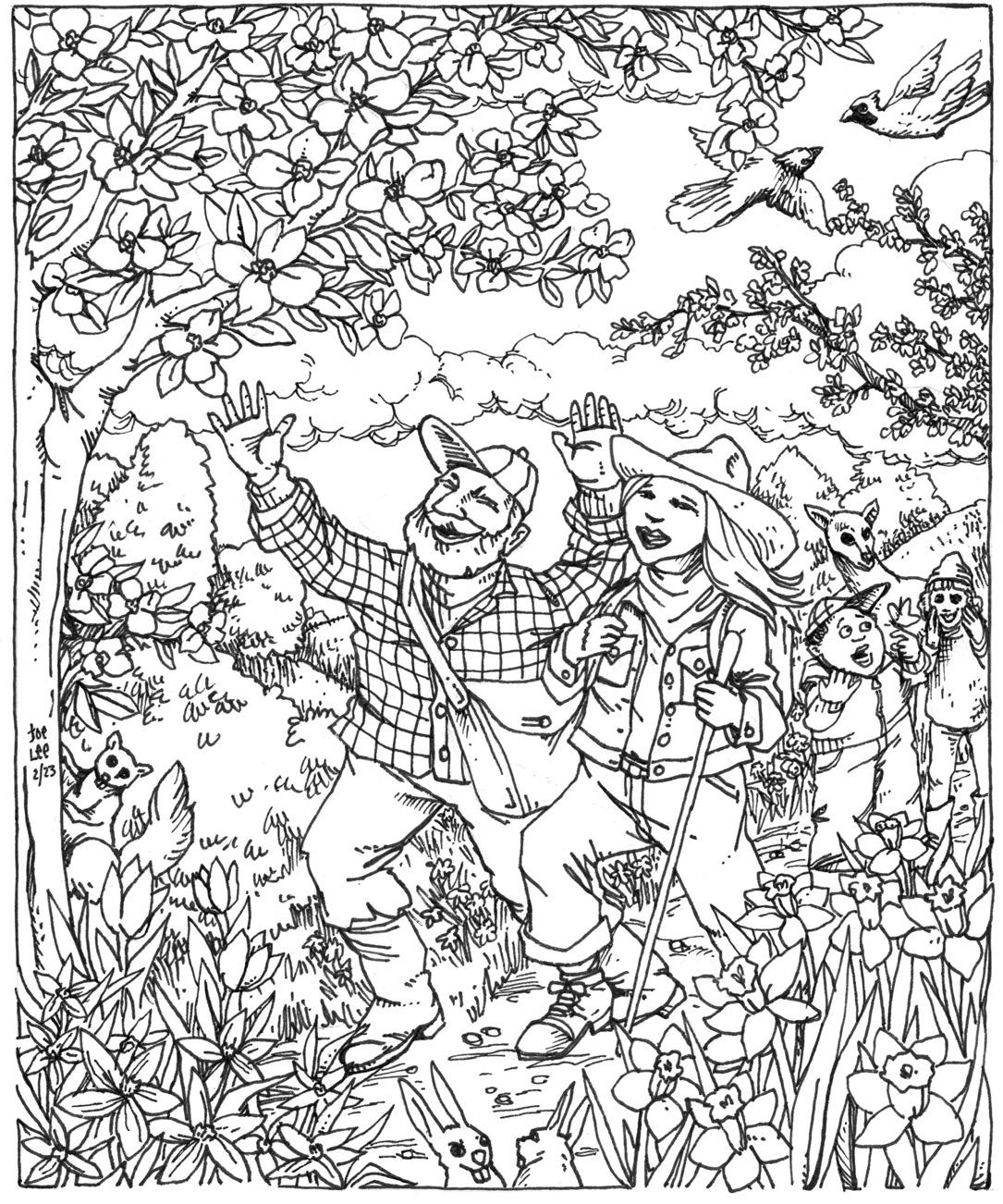
March/April 2023 • Our Brown County 11 Coloring Contest Win $30 OUR BROWN COUNTY P.O. Box 157 Helmsburg, IN 47435 Publisher’s choice. Send to this address by April 20.
The third highest point in the state of Indiana is in Brown County State Park, about a mile south of the Abe Martin Lodge. This location was listed as the very highest point in the state until the time of the 1920 census. It is easy to find because a large fire tower was buit there. From the top of the tower, on clear days, one can see as far as Bloomington, 18 miles away. What is the name of that hill in the state park?

The answer to last issue’s mystery was C. Carey Cloud.



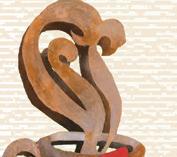









12 Our Brown County March/April 2023 WIN $30 History Mystery Trains: Elec tric, Wooden, and Christmas Indiana-Made Ornaments • Puzzles • Kid-Friendly 75 S. Je erson St. • Antique Alley • 317-783-6726
County
Trains 812-988-8807 FIRST to leave a message with the answer along with your name and phone number WINS! Gold & Gold & Rings • Ank lets • Bracelets • Necklaces Sterling Silver Blue building in Antique Alley Watches Gifts Gifts 1000’s of Pendants 50% OFF JEWELRY S. Jefferson St. • Nashville, IN COMMON GROUNDS 66 N. Van Buren, Nashville (Molly ’s Lane behind the red door) Opens 8:00 am M-Sat; 9:00 am Sun (Closed Wed) 812-988-6449 COFFEE BAR Hot, Cold & Frozen Drinks • Selection of Teas Froothies (our fruit smoothies) It’s like a coffee shop in a living room Famous for Cheesy Eggs & Toast • Pastries • Quiche (with things to amuse you)
Brown
Model




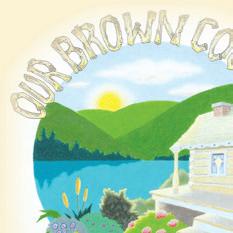


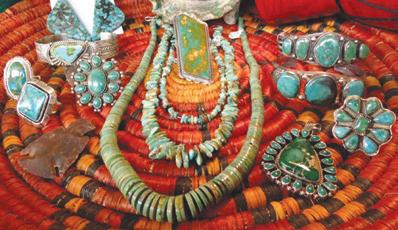










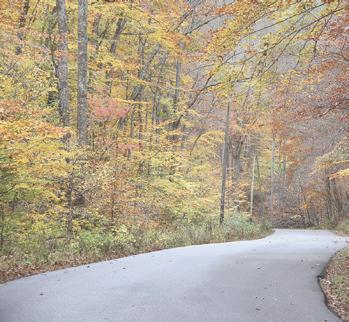





March/April 2023 • Our Brown County 13 38 Franklin St. E. | Nashville, IN | drink atthecreek.com | Open Ever y Day BONE APPETIT BAKERY PPETIT BAKE For Dogs Get a FREE Sampler bag of natural dog treats with $10 purchase and this ad. www.barkingood.com • Premium, all-natural treats since 1997 • Over 20 varieties from low-fat to grain-free • Gourmet and seasonal snacks, too DOGS WELCOME! (812) 988-0305 211 S. Van Buren St. (behind Visitor Center) Open 7 days SUBSCRIBE One Year ’s Subscription for $20 (six issues) Mail with check or money order to: Our Brown County P.O. Box 157 • Helmsburg, IN 47435 Name: Address: N SUBSCRIBE! Makes a great gift. The Totem Post 78 S. Van Buren St. Nashville , IN 812-988-2511 ~Since 1952~ TheTotemPost.com • Genuine Native American Jewelry • Zuni Fetishes • Sterling Silver Jewelry • Copper Jewelry • Minnetonka Moccasins • Pendleton • Knives ~Open all year~ Unplug with a Good Book Journals • Sketchbooks Handmade Greeting Cards Local Postcards 45 S. Je erson St. • Nashville, IN 812.988.0202 • fallenleafbooks.com Open 7 days a week 10 am to 5 pm Old, New, Used and Rare Books created by hand local artisans EST1978 BROWN COUNTY Fine arts and crafts by local and area artists View their work on Facebook & Instagram See something you want? Message us! Open Daily 10 to 5 812.988.7058 62 E. Washington · Nashville, IN · BrownCountyCraftGallery.com
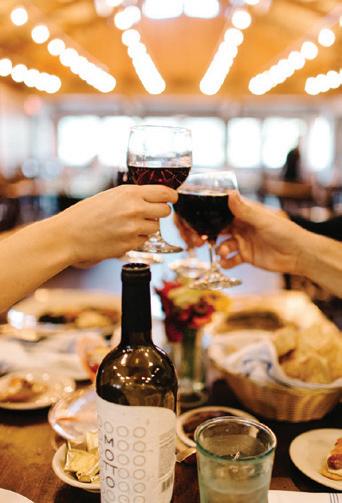



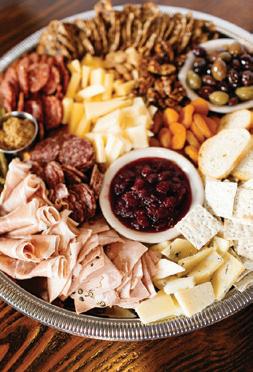



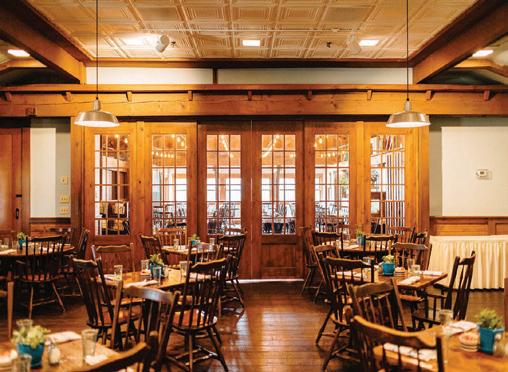

14 Our Brown County March/April 2023 On the corner of 135 & 46
downtown
free
8am to 9pm Sunday to Thursday 8am to 10pm Friday & Saturday Serving Breakfast, Lunch and Dinner 7 days a week brown County Inn HOTEL , RESTAURANT & BAR www.browncountyinn.com (812) 988-2291
just 3 blocks of
with
parking
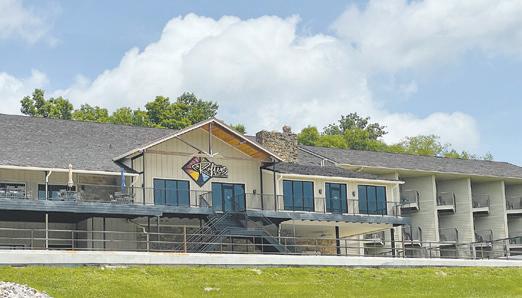
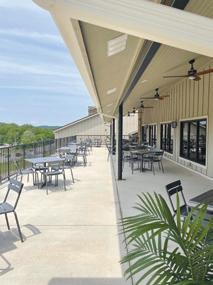


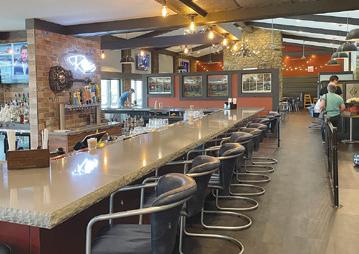
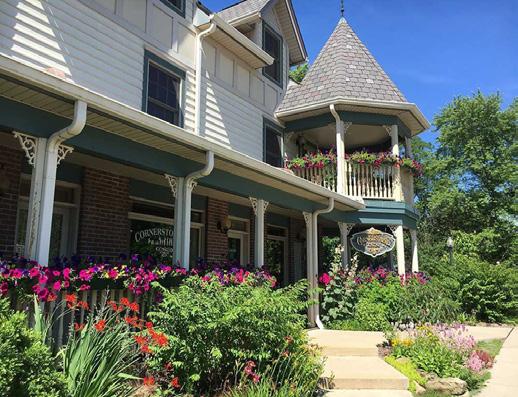
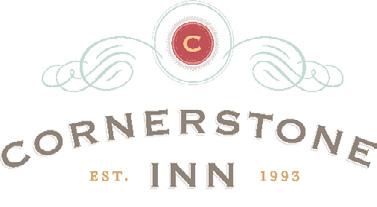
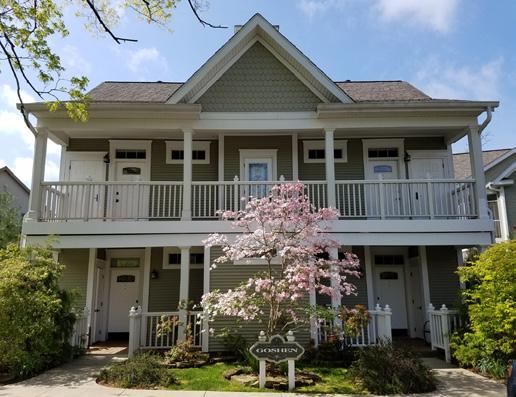
March/April 2023 • Our Brown County 15 812-988-2284 • SeasonsLodge.com 560 State Road 46 East, Nashville, IN
Brown County Music Center Hotel & Event Center New Restaurant, Bar, Patio Conference facility–up to 500 Balcony Rooms including our Vacation Homes Tudie’s Cottage, The Lodge, and Cabin 360 812-988-0300 • 54 E. Franklin St. Downtown Nashville CORNERSTONEINN.COM Rest & Relax
Across from the
Brown County’s
Community Closet
With morning temperatures still in the single digits, 84-year-old Truvenia “Toots” Finley makes as quick of a trip as she can from the Community Closet thrift store’s jampacked sorting room to the outdoor storage shed housing donations that won’t fit inside the tiny shop.
The back and forth rhythm of fetching clothing bags and household items that need sorted and priced paces the days Finley volunteers at the nonprofit store at 284 S. Van Buren St.—beneath the back of the Subway restaurant.
Some of her trips are farther, to the enclosed trailer storing donations that the out-of-space shop will pass on to other organizations.
“None of it is convenient,” said Joyce Snyder, the Community Closet’s board president. “We’ve just outgrown our space so fast. We would love to
move into a bigger space to be able to serve our community better.”
The Community Closet thrift store and community-assistance agency will celebrate its 50th birthday in 2024, and the organization can’t imagine a better gift than a larger location to help expand its offerings to the Brown County community.

Established in 1974, Community Closet is a service organization that provides financial assistance, goods, and services to low-income Brown County residents during times of crisis. The nonprofit also donates to more than 20 community organizations including the schools’ weekend backpacks meal program, Shop with a Cop, the Veterans Coalition, and more.
The assistance is possible because of the income generated by the Community Closet
16 Our Brown County March/April 2023
~story and photos by Chrissy Alspaugh
Volunteers Sally Sanders and Susanne Brinkley at the checkout counter.
thrift shop, which resells donations of gently used clothing, home decor, kitchen wares, and more. The store is open to the public on Tuesdays, Thursdays, and Fridays.

With no paid staff, the shop relies on the dedication and availability of volunteers. That allows the organization to funnel every dollar of the store’s net income back to Brown County nonprofits and pre-screened individuals in need.
Sometimes residents need help paying rent; others are welcomed into the store to select clothing and household essentials for free.
The Community Closet provided support to one Brown County man in the fall of 2022 when he said he felt like he was on the verge of losing everything.
The 12-year Brown County resident, recommended for this interview by the Community Closet’s board members but who asked to remain anonymous, said he was working as a federal defense contractor in May 2022 when an on-the-job injury left him in need of knee replacement to return to work. Stuck between surgery delays and the end of his workman’s compensation, the man said he sold everything he could but feared losing the home where he lives with his wife, son, and three grandchildren. The Community Closet stepped in to help with rent and a truck payment.
“I had so much pressure on me, and when
somebody says they’re going to help it’s just such a relief. We’re blessed to be in a community that cares about other people,” he said. Now nearly healed from his end-of-November knee replacement, the grateful community member said he has applied for a reserve officer position with the Nashville Police Department and hopes to give back to the community that helped during his time of need.
The Community Closet gave out more assistance in 2022 than any other year in its history: $25,000.
Susanne Brinkley, the nonprofit’s board secretary, said the group is committed to increasing its giving in years to come.
To make that happen, the store needs more volunteers to work 3.5-hour shifts, which would allow the Community Closet to add days the store is open, she said.
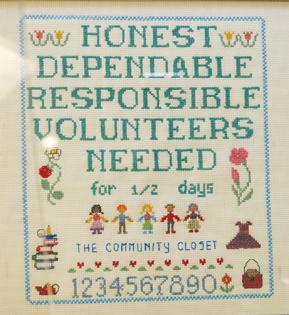
Snyder said the nonprofit also must increase its visibility in the community. “A lot of Brown County residents don’t even know we’re here,” she said, noting the store has begun increasing its local marketing and launched a newsletter with coupons that customers can sign up for inside the store.
But the nonprofit’s biggest hurdle will be finding a new location with more square footage,
March/April 2023 • Our Brown County 17
Continued on 20



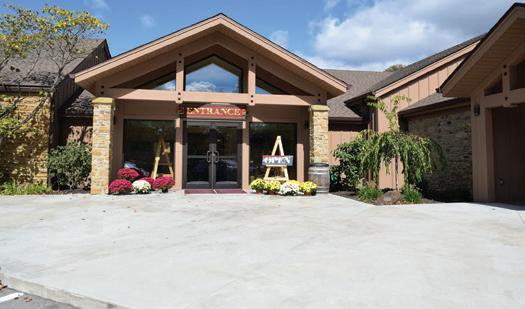
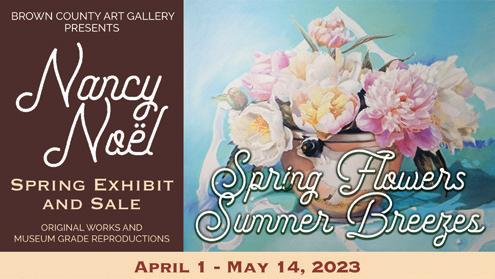

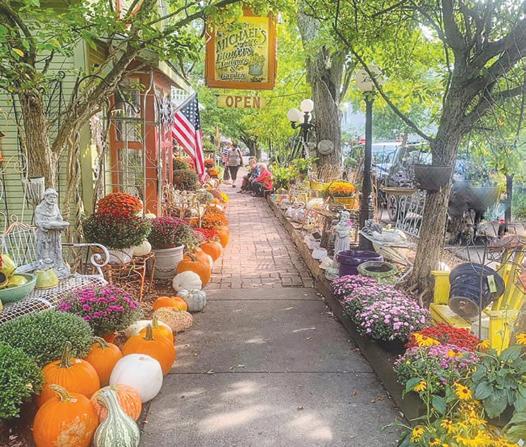
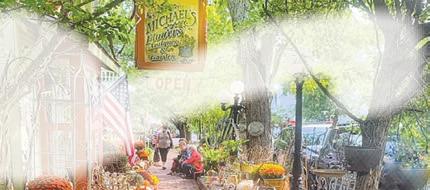
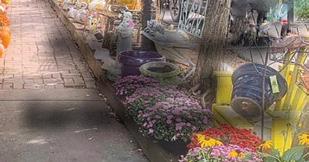



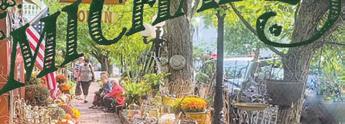

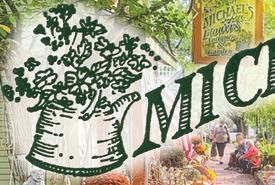
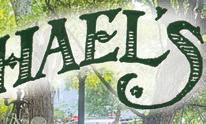




18 Our Brown County March/April 2023 Handcrafted Leather Goods · Made in the USA 812.988.1326 · moonshineleather.com 38 SOUTH VAN BUREN · NASHVILLE, IN M O ON SHIN E L EATHE R COMPANY Complete event schedule online at BrownCountyArtGallery.org F d CORNER OF MAIN STREET & ARTIST DRIVE · NASHVILLE, IN 812.988.4609 · OPEN DAILY · FREE ADMISSION · FREE PARKING Brown County Art Gallery Flowers Antique Store since 1972 Over 10,000 square feet in three buildings Filled with antiques, jewelry, potter y, china, glass, furniture, ar tifacts, primitives, books, collectibles, and home decor. More than 76 dealers • We buy and sell Open 7 Days a week till 5:30 • 812-988-1025 3 miles east of Nashville, IN • 13 miles west of I-65 3288 State Road 46 East
County
Mall
Brown
Antique
HABERDASHERY
From fedoras and stingy brims to ivy caps and hiking hats —we’ve got you covered
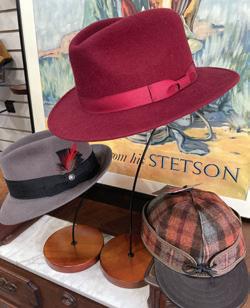
Weed Patch Music Company


Your favorite lil’ music store in Brown County, Indiana 58 E. Main St. Nashville (by courthouse)
www.weedpatchmusicshop.com 812-200-3300
Also comfort footwear from Minnetonka and Acorn including slippers for the entire family onka andAcorn
Find us on Facebook • OPEN DAILY 11–5

Bring

your
Offering affordable instruments to inspire the beginner and locally handcrafted beauties to awe the professional
Musical instruments for all ages and skill levels Lessons, workshops, and more...



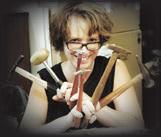
NEW LEAF
An eclectic mix of creative items by local, regional, and global artists
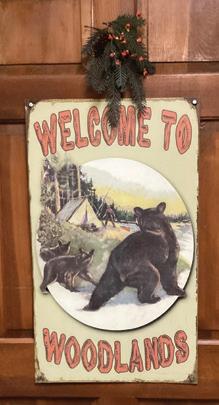
Featuring handcrafted jewelry by owner Amy Greely
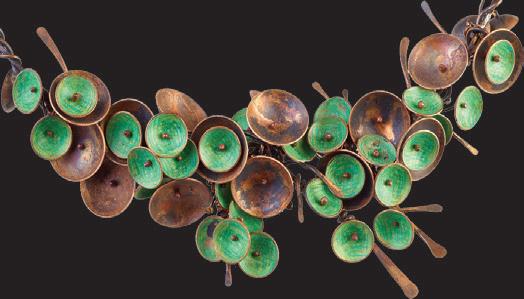
Calvin Place Franklin & Van Buren Streets Nashville, IN • (812) 988-1058 www.amygreely.com
Guild Ar tist Exhibition & Sale


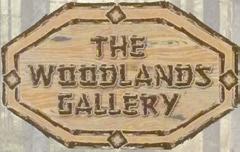

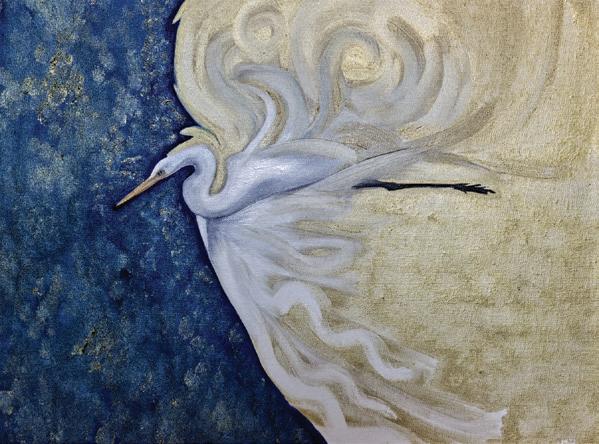
March 10 – July 7, 2023 MARY

March/April 2023 • Our Brown
19
County
RILEY Blaze of Light
the Woodlands into
87 East Main Street Nashville, Indiana 812-988-6080 home
49 S. Van Buren St. in Nashville • 812-988-6535
COMMUNITY CLOSET continued from 17
Snyder said. The current lack of space is noticeable daily to the volunteers who move donations between the store, outdoor shed, and trailer—as well as to the volunteers who launder soiled clothing donations in their own homes because the store lacks a washer and dryer.
The space limitations prevent the Community Closet from being able to offer furniture to individuals in need, Snyder said. “Families who lost their homes in a fire would greatly benefit from that kind of help,” she said.
Board members have begun exploring Brown County buildings that might be an ideal new home.
Working to fund a down-payment, the nonprofit has launched a building fund that now sets aside 15 percent of store sales for the eventual purchase of a new space. Brinkley said the board is exploring grant opportunities and eagerly would welcome a volunteer grant writer.

Vicki Payne, the board’s treasurer, said nothing compares to being able to help struggling community members, and she can’t wait for the Community Closet to be able to help in bigger ways.

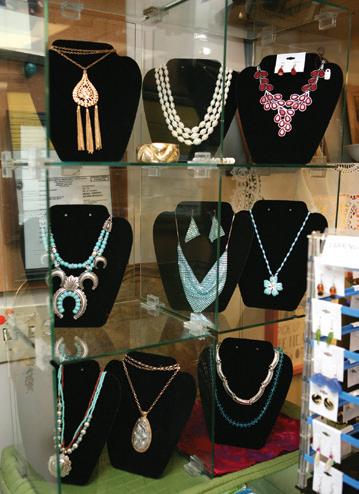
“It feels great knowing the Closet can help folks over their bump and get them back on their feet,” Payne said. “When folks we’ve helped come into the store to thank us, the look on their face is just the best feeling in the world.”
Community Closet thrift store hours are 10 a.m. to 5 p.m. Tuesdays and Thursday and from 10 a.m. to 3 p.m. Fridays. For information, 812-988-6003 or visit “Brown County Community Closet, New” on Facebook.
20 Our Brown County March/April 2023
Pat Harden and Toots Finley sort through new donations.
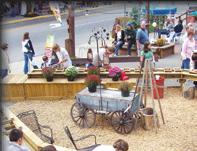






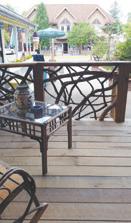




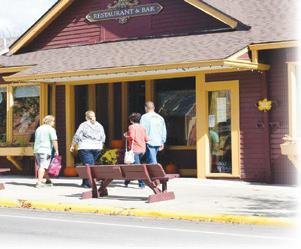




March/April 2023 • Our Brown County 21 COPPERHEAD CREEK Nashville, Indiana’s #1 Fun Attraction GEM MINE Pan for Gems Fossils Arrowheads Fun and n an Educational for All Ages ROCK FOSSIL BROWN COUNTY SHOP Just North of the Courthouse 79 N. Van Buren ~ (812) 988-2422 and 8000 lbs. of NEW Beautiful & Unique Specimens for 2023 www.BrownCountyRockShop.com “Smack Dab in the Hear t of the Village” Nashville, Indiana www.IrisGardenLodging.com (812) 988-2422 Located just North of the Cour thouse across from Big Woods Restaurant and Brewery The Iris Garden
t
village of Nashville.
of your
to
wonder ful shops, restaurants,
and breweries without
drive anywhere. Open Year-Round for Lunch & Dinner Fresh made to order star ters, salads, sandwiches and house specialties Brown Count y’s only “Husband Day Care” Guinness on tap • Full bar • Specialt y drinks • Bloody Mary • Islander • Margarita Full menu available in Bar • Large TV 61 South Van Buren St . • Nashville, IN Across the street from the Brown County Playhouse (812) 200-1999 • OutOfTheOrdinaryRestaurant Open Daily at 11 a.m. Out of the Ordinary Restaurant & Hickory Sports Bar 5515 State Road 46 East • Nashville, Indiana 812-568-1209 • info@awayadayrvcampground.com Beautifully landscaped on 59 acres 91 Campsites each with a fire pit, picnic table, and gravel lot Sta on-site Full water/sewer hookups 20, 30 and 50 AMP Access to all campground amenities Minutes om dow ntow n Nashv ille • E a acce om I65
rests comfortably in the hear
of the
Simply walk out
door
explore the
wineries,
having to
Fine Art Crafts & Handcrafted



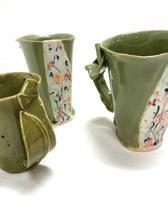



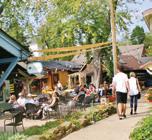
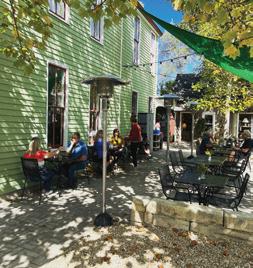

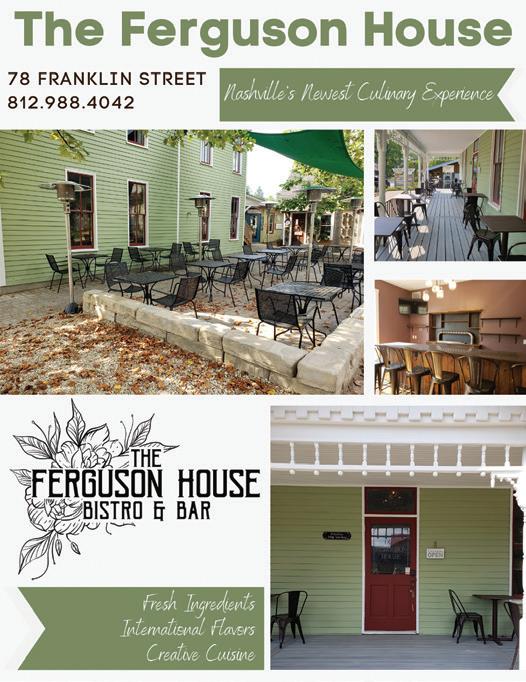


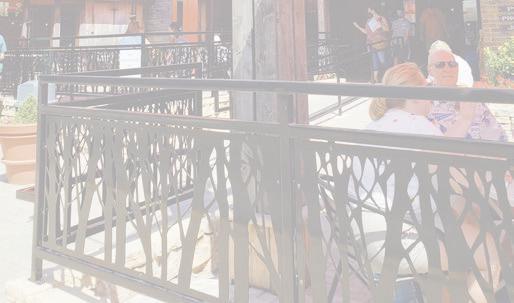
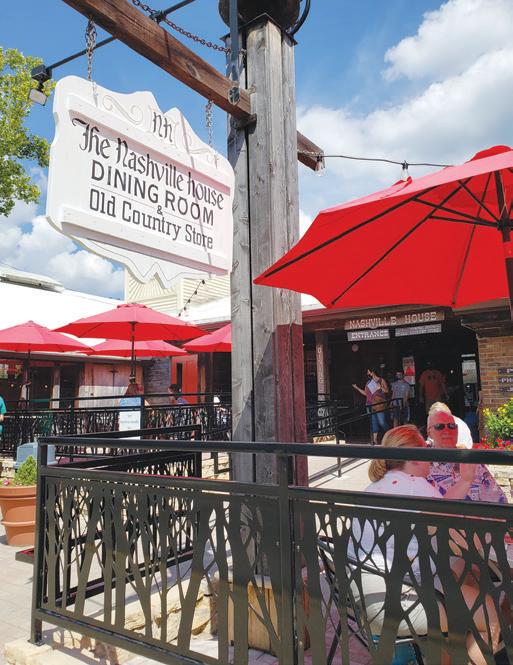
22 Our Brown County March/April 2023 Serving our famous fried biscuits and apple butter, fried chicken and other traditional favorites all made in our own kitchen from scratch. Brown County’s Most Historic Restaurant Come check out our Old Country Store, beautiful new patio, expanded menu and HOHENBERGER BAR 15 South Van Buren Street 812-988-4554 www.nashvillehousebc.com EST 1927 LOCALLY HANDMADE FINE CRAF TS BESIDE THE NASHVILLE HOUSE RESTAURANT 812.988.1286 • Spearspottery.com • facebook.com/Spears-Gallery We now carry Schuster Glass HoosierArtist.com 45 SOUTH JEFFERSON STREET / NASHVILLE, IN 47448 / 812-988-6888
Discover handcrafted fine art and crafts by talented local artists for wearing, collecting, gifts, and home or office decor.

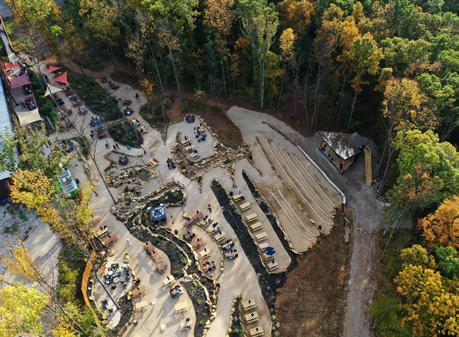

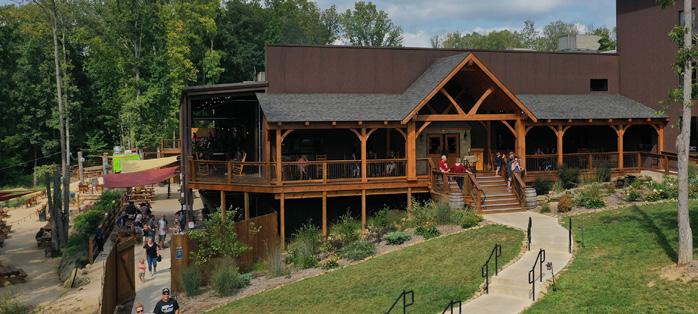


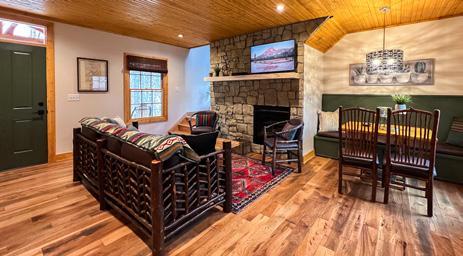
March/April 2023 • Our Brown County 23 418 OLD STATE RD. 46, NASHVILLE, IN 47448 +1 (812) 720-4840 VISITHARDTRUTH.COM PRESENTS GET YOUR 202 3 SEASON PASS NOW! RESTAURANT/BAR
LODGING
TOURS
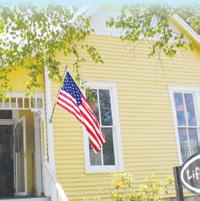

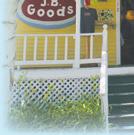








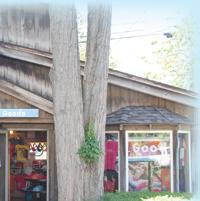





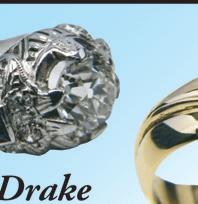

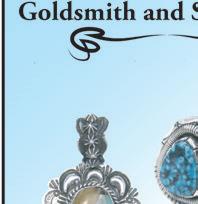
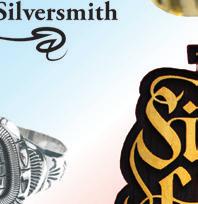

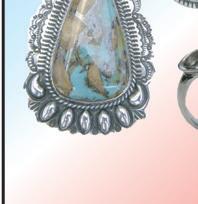



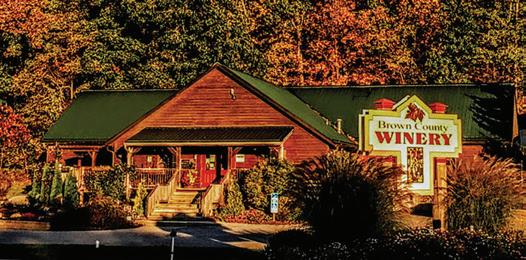











































































































24 Our Brown County March/April 2023 102 S. Van Buren Street (Calvin Place) 172 N. Van Buren Street AND in Nashville, IN www.JBGoods.com • 812-988-0900 Touch of Silver, Gold & Old 87 E. Main St. • Nashville, IN 47448 (812) 988-6990 • (800) 988-6994 Hours: 10am – 5pm • 7 days a week touchofsilver@gmail.com 50 YEARS BrownCountyWinery.com Complimentary Tastings · Two Tasting Rooms WINERY IN GNAWBONE 4520 State Road 46 East · Nashville 812.988.6144 VILLAGE OF NASHVILLE East Main & Old School Way 812.988.8646 OPEN DAILY Monday-Thursday 10 – 5 · Friday & Saturday 10 – 5:30 · Sunday 11 – 5 Wine & Wine-related Gifts · Gourmet Foods Outdoor Seating · Gift Cards · Online Ordering Brown County WINERY RY · AWARD WINNING QUALITY WINES SINCE 1986 ·
Hoosier Buddy Liquors


Cold Beer, Fine Wines & Select Spirits



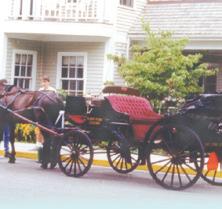
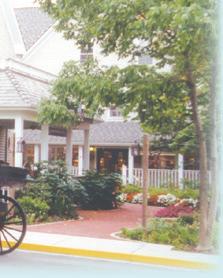


Cold Beer:
Hoosier Buddy o ers more than 150 di erent beers, including more than 80 craft, micro, and impor ts. We proudly o er a wide variety of beers from Indiana’s nest brewers.


Fine Wines:










Hoosier Buddy is a wine -lovers type of store With more than 200 wines to choose from, we’ve got something for ever yone. Check out our “A ordable Impor ts” and “90+ Point” selections
Select Spirits:

Hoosier Buddy o ers an ever expanding array of top -notch spirits. Our whiskey categor y alone includes more than 75 di erent choices. Whether you’re look ing for a Single Barrel Bourbon or a Single Malt from Islay— we stock them.

March/April 2023 • Our Brown County 25
S. Van Buren • Nashville, IN (next to Subway) 812-988-2267
Liquors
you to celebrate
drink and drive. Follow us on Twitter @HoosierBuddy1 M-Th 8am-10pm • Fri. & Sat. 8am-11pm NOW OPEN SUNDAYS Noon-6pm 812-988-0600 • 800-737-0255 the Inn & Restaurant At the corner of Van Buren and Franklin Streets in Nashville, Indiana ar tistscolonyinn.com Breakfast Bu et 8:00 am–10:30 am A Charming 19th Century Style Inn and Restaurant • 20 Guest Rooms, 3 Suites with Whirlpool Baths • Banquet and Conference Rooms for Retreats or Par ties • Gift Cer ti cates Available Serving Breakfast, Lunch, Dinner Monthly Dinner Theatre Shows at Ab e’s Corner BOUTIQUE Large Selections of Women’s and Children’s Clothing Handmade Purses 58 East Main • Nashville, IN • next to courthouse HIDDEN GETAWAY Apartment for Daily Rental $90 on the weekdays $100 on the weekends Inquire inside boutique 812-720-7071 Open Daily 9:00–7:00
284
As always, Hoosier Buddy
reminds
safe—don’t
Ab e’s Corner
Rick Wilson Honorary Brown Countian
It hardly seems fair, but some people have talent and skill in more than one creative endeavor. Rick Wilson, now known for his accomplished landscape paintings, has been a respected bluegrass musician for many years. His father, a bluegrass instrumentalist, moved in the early 1950s from Kentucky to Edinburgh, Indiana, to work at Camp Atterbury military post. He encouraged Rick, the second of five sons and one daughter, to play guitar at an early age.
Rick joined the Harden brothers’ Brown County Boys in 1970. Ten years later the band became Pine Mountain. Frequenting area bluegrass festivals, Rick met notable artist and banjo player C. W. Mundy long before they both realized their common interest in creating paintings. As Rick tells it:
“We’d jammed all night at a bluegrass festival in Westfield in the early ‘90s. The sun was coming up and we were both dog tired, so we sat in my car and talked for a while. C. W. and Rebecca were going to France. I said, ‘Sounds like a fun vacation.’ He said, ‘No, it’s for work.’ I asked, ‘What do you do?’ and he told me, ‘I’m an oil painter.’ ‘No kidding,’ I said. ‘So am I.’”
In 2003, when Rick was laid off after thirty years at Kawneer Aluminum (architectural materials) in Franklin, he decided to pursue fine art professionally. C. W. called and said, “Hey, I hear you’re gonna be an artist. Well, it’s one thing to start a career and something else to maintain it.” He invited Rick to his studio for the next few weeks and then mentored him through his early vocational change. “I owe my career to C. W.,” Rick said.

26 Our Brown County March/April 2023
~story and photo by Rachel Berenson Perry
“Indiana is my home. And I love all the geographical regions here. There’s a neverending array of things to paint.”
Although his paintings sell well and the list of prizes in juried exhibitions is impressive (numerous merit and purchase awards in Hoosier Salon and Richmond Art Museum annual exhibits), Rick continues to work as a self-employed draftsman, producing architectural blueprints at Miller Architects in Nashville. He learned CAD (computer aided design) during his career at Kawneer.
Rick’s current day job and former musical associations aren’t his only Brown County affiliations. While still in high school he lived with the Harden family during the summer, working with their dad at Associated Engineering. “So, I guess I’m an honorary Brown Countian,” he ventured.
His training and ability to
visualize in 3-D is no doubt helpful with his rendering of realistic structures as well as land and seascapes. Though Rick enjoys the challenges of painting crashing waves, the rocky coast, and small fishing villages in Maine, he has explored all the back roads in Brown County looking for ideal scenes. “Indiana is my home,” he declared. “And I love all the geographical regions here. There’s a never-ending array of things to paint.”
Rick considers his works tonalist in style, emphasizing mood and softness of form. Tonalism is derived from the French Barbizon school. “My paintings are a little tighter [than a lot of current landscape artists’],” he said. “The Barbizon school was a precursor to Impressionism.
They loved painting from life, replicating light bouncing off objects. Coming from an academic world, their works were tighter, concerned with brushstrokes and learning about landscape in the early-to-mid-1800s. Barbizon paintings are the ones I seek out when I go to a museum. I drool over them until a guard warns me away,” he laughed. “I don’t want to copy them but capture that mood.” To achieve this, he uses umber colors in his underpainting, which affects the hues of the final image. Compared with bright impressionistic colors, Rick’s landscapes appear more muted.
“I love to plein air paint (on location) and be outdoors,” Rick said. “But I don’t use my plein air pieces for reference when doing

March/April 2023 • Our Brown County 27
Continued on 28
“The Long View.”
RICK WILSON continued from 27
studio paintings. Once I’ve painted something, I don’t want to do it again. I can create a 12” X 16” plein air painting in a few hours, and it will be a similar degree of finished as a studio piece.”
Balancing his architectural work with his professional painting practice limits Rick’s outdoor painting time, so his newly built backyard studio is a necessity. “I can now paint on weekends and in
evenings,” he said. “Before, I was in a storefront in Edinburgh for eighteen years.”
In addition to his other occupations, Rick is on the staff of Plein Air Magazine. He helps with the twice-yearly Publisher’s Invitational Artist Retreats located in the Adirondacks and other locales. Assisting with registration, he also coordinates the evening entertainment. Encouraging artists to bring their instruments for musical jam sessions, he effectively combines his two creative passions—art and music. His accomplishments in both enterprises would make any Brown Countian proud.
Rick Wilson’s paintings can be seen at the Brown County Art Guild, the Indiana Heritage Art room at the Brown County Art Gallery, and at <www.rickwilsongallery.com>. Call 812-371-1699 for studio appointments.


28 Our Brown County March/April 2023
“Evening Thunderhead.”
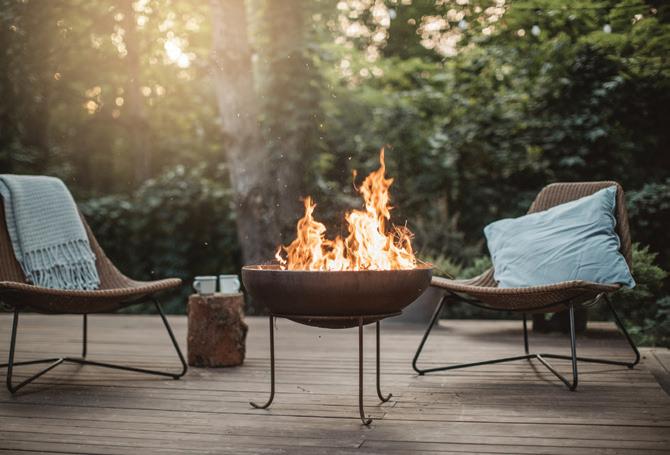


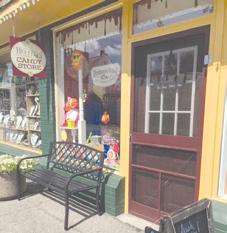
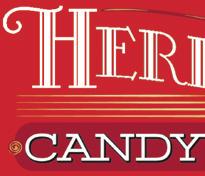















March/April 2023 • Our Brown County 29 Copyright©2022 Fairway Independent Mortgage Corporation. NMLS#2289. 4750 S. Biltmore Lane, Madison, WI 53718, 1-866-912-4800. Restrictions and limitations may apply. All rights reserved. Equal Housing Opportunity. FW1790703 As a local mortgage lender who lives and works in Nashville, I understand the area and would love to help finance your next home, vacation home or investment property! Contact me today to learn more! Tracy J. Landis Loan OfficerNMLS #256205 Office: 317-658-5933 tracyl@fairwaymc.com www.landisloanpro.com 91 West Mound Street Nashville, IN 47448 Your Trusted LOCAL MORTGAGE LENDER LOCAL MORTGAGE LENDER Your Trusted 41 S. Van Buren St. Nashville, IN (in the Heritage Mall) 812.200.1077 HeritageCandyStore@gmail.com Fresh Homemade Fudge Old-Fashioned Candies Candy by the Pound Cream Filberts/Mothballs Rock Candy • Jelly Belly Chocolates/Turtles Pucker Powder Sugar Free We ship every where! Ask about our Wedding Favors and Fundraising with Fudge Knives by Benchmade, Kershaw, Microtech, Esee, Tops, Protech, Zero Tolerance and more Tobaccos and Premium Cigars Guns and Ammo for Competition, Hunting, Sport, and Home Defense Variety of T-Shir ts Things you can live without ... but who wants to! Thi li itht bt h tt ! ii ’ Old Colonial Bldg. 60 N. Van Buren St. Nashville, Indiana•812.988.6590 menstoyshop@yahoo.com•Visit us on Facebook
live your life adventure here!
We are real estate professionals, specializing in Brown County. We work here. And we are passionate about living here and love helping others realize their dreams. When you’re looking to buy or sell a home or property, or just dreaming—please contact us. Let’s talk.

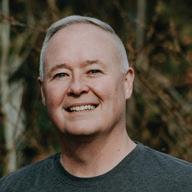

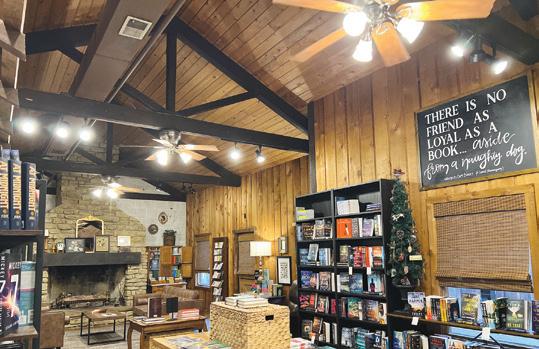

Call or text Danny or Bob.

30 Our Brown County March/April 2023 A mother-daughter owned bookshop Specializing in new books, classic literature, and bookish gif ts for every type of reader LOCATED IN THE HISTORIC STATE BANK BUILDING 76 1/2 East Main Street Nashville, Indiana www.naughtydogbooks.com Follow us on Facebook & Instagram
Want Brown County Real Estate? Call Brown County Real Estate. DANNY KEY Managing Broker 812 606-6275 bob Blass Licensed Broker 317 652-9661 liveinbrowncounty.com
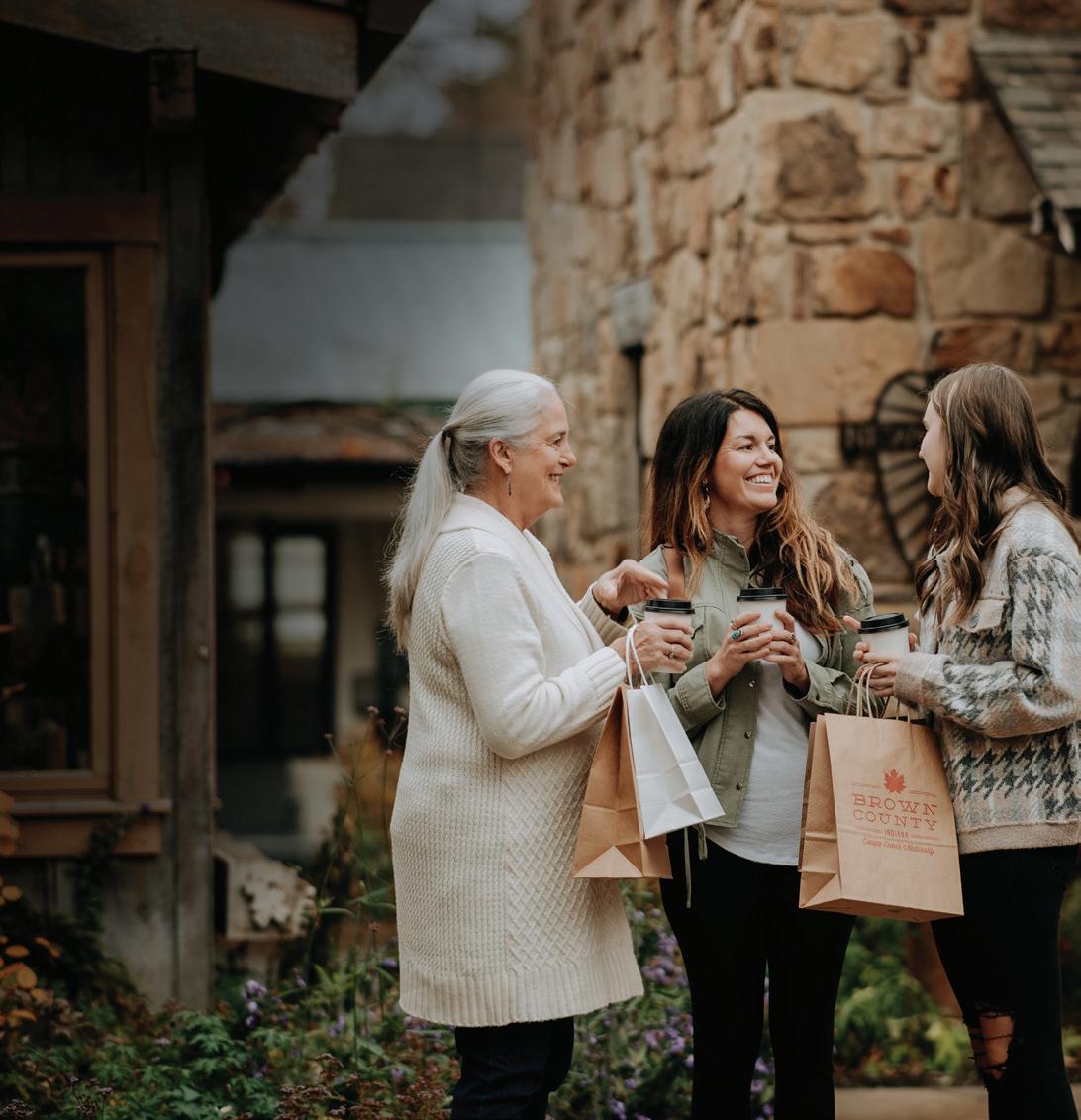
March/April 2023 • Our Brown County 31 @ILoveBrownCounty @ILoveBrownCounty @ILuvBrownCounty Let’s be friends Locally made. Handcrafted for you. Don’t miss all the eclectic boutiques, specialty shops, and antique stores you can explore while you’re here. Visit BrownCounty.com for a complete listing. Brown County Visitors Center. 211 South Van Buren Street. Downtown Nashville.
Musings
The Cowboy Creed
~by Mark Blackwell
Unpleasant weather drives me to check out what is on TV. On one of those recent damp, cold evenings, I took to the remote, and scanned what was available.
Cops—that was what was on TV! Cops and detectives. Every channel and streaming service had a glut of cop shows. I wondered whether the screenwriters were in a big rut or if there is a big law enforcement propaganda lobby that took over television?
It’s not that I don’t find cop shows entertaining; I do, but there is something missing in those stories. I probably should own up to being an O-F—that stands for Old Fellow. I grew up at a time when it was hard to find anything but cowboy shows on all three channels.
In many respects TV cowboys weren’t much different from TV cops—they are both sworn to right wrongs, they both carry guns, they are both somewhat obsessive. And even though I couldn’t put my finger right on it, I felt that there is a fundamental difference between the two.
I fired up my mental “way back machine” and went back in time to a random Saturday morning in the 1950s. Depending on the particular TV station you were tuned to, you could see Roy Rogers, The Lone Ranger, Hopalong Cassidy, Wild Bill Hickok, or a half dozen other “straight shooters.”


In the evenings “adult” westerns ruled the airwaves. They were programs like “Gunsmoke”, “Wanted: Dead or Alive,”
“Bonanza,” and the only one I really liked, “Have Gun Will Travel.” While all the cowboy shows featured generous quantities of gunplay, I think the major differences in the two types of westerns were the ones made for a younger audience had some humor in the story, and the heroes were better marksmen.
The evening western heroes tended to be fairly grim and they had to rely on tricked-out weaponry, such as the Rifleman’s loop-levered 1892 Winchester carbine or the cut-down double barrel shotgun carried by Steve McQueen’s character, Josh Randall. Whereas, the Saturday morning boys were much better shots with standard Colts, Winchesters, and even lassos.
Hopalong Cassidy could shoot the gun out of a villain’s hand at thirty yards. Roy Rogers could do the same while riding Trigger at a full gallup. But I think the biggest difference in TV cowboys is that the the Saturday morning heroes had a code or a creed that a kid could live by. Both the kid’s programs and the more mature westerns were morality plays, but I don’t
32 Our Brown County March/April 2023
remember Matt Dillon ever espousing any particular philosophy.
Gene Autry had a ten-point “Cowboy Code of Honor” and Hopalong Cassidy had his “Creed for American Boys and Girls.” “Roy Rogers Riders Club Rules” was another ten-pointer. Then, there was Wild Bill Hickok’s “Deputy Marshal’s Code of Conduct” that only had nine rules to live by.
My favorite is the “Lone Ranger’s Creed:”
• I believe that to have a friend, a man must be a friend.
• I believe that all men are created equal and that everyone has within himself the power to make this a better world.
• I believe that God put the firewood there but that every man must gather and light it himself.
• I believe in being prepared physically, mentally, and morally to fight whenever necessary for that which is right.
• I believe that a man should make the most of what equipment he has.
• I believe the “this government, of the people, by the people, and for the people” shall live always.
• I believe that men should live by the rule of what is best for the greatest number.
• I believe that sooner or later, somewhere, somehow, we must settle with the world and make payment for what we have taken.
• I believe that all things change but truth and truth alone lives on forever.
•I believe in my creator, my country, and my fellow man.
That list is a lot for a ten-year-old kid to chew on. But we did, and it made us feel like we were friends or more like sidekicks to our heroes.
I don’t know how many people hereabouts know or remember that there was a movie theater right in downtown Nashville. I didn’t know until I came across a picture of it taken by Frank Hohenberger in a book titled Images of America Brown County by Rick Hofstetter and Jane Ammeson. It was called Melodeon Hall, after a theater mentioned in a Kin Hubbard cartoon, and was operated by Cecil and Leila David.
That photo made me imagine a gaggle of young’uns, decked out in chaps and cowboy hats on a Saturday afternoon, gathered around the ticket booth, practicing their quick draws and the cowboy creed.
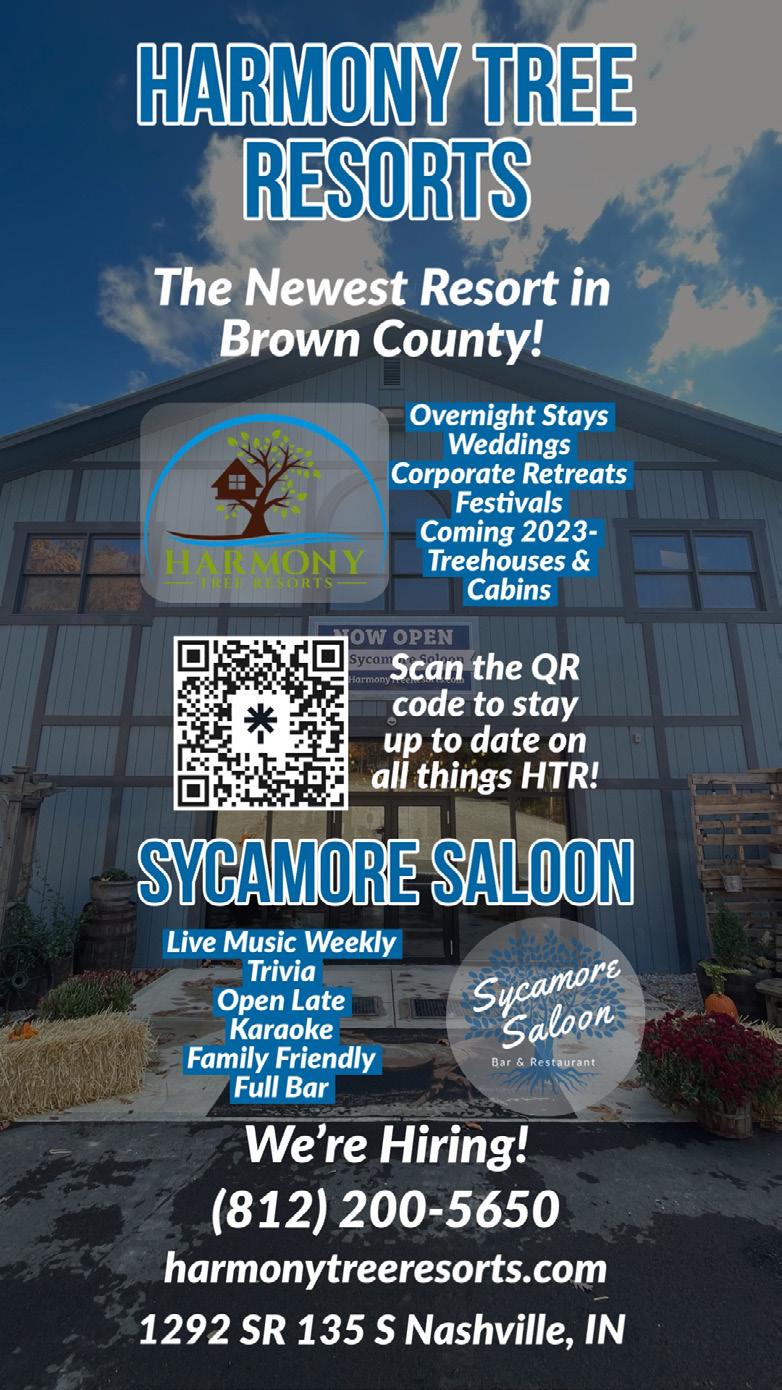
March/April 2023 • Our Brown County 33

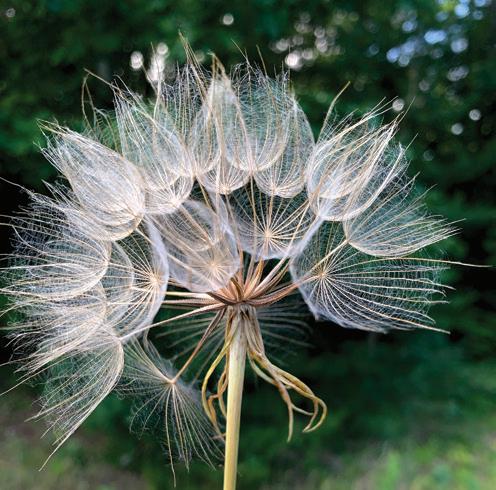

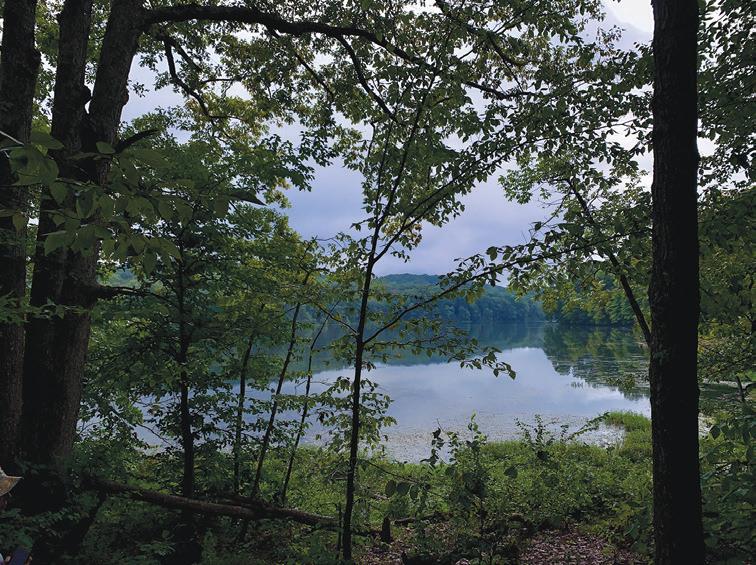
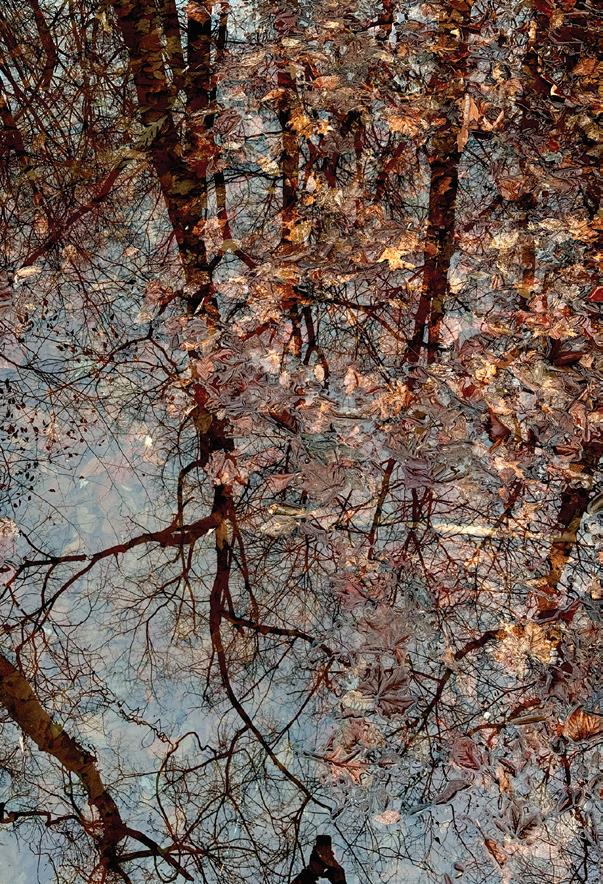 photos by Anne Ryan Miller
photos by Anne Ryan Miller



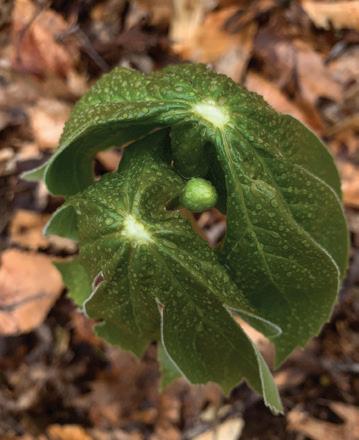

Calendar
Brown County Playhouse
March 4 Dogs of Society
—Elton John Rock Tribute
March 11 Parrots of the Caribbean
—music of Jimmy Buffett
March 18 The Woomblies Rock Orchestra
March 25 Sounds of Summer
—music of the Beach Boys
March 31 O’Shea
April 1 American Fools
—music of John Mellencamp
Over the River and through the Woods
April 7, 8, 14, 15 at 7:30
April 8, 9, 16 at 2:30
April 27 Riders in the Sky
70 S. Van Buren Street 812-988-6555
www.browncountyplayhouse.org
Brown County Music Center
March 8 Blue October
March 11 Nitty Gritty Dirt Band
March 17 Girl Named Tom
March 19 Scotty McCreery
March 25 38 Special
March 26 Lewis Black
April 14 Crystal Gayle
April 18 Cheap Trick
April 26 Brian Regan
April 29 Blues Traveler
April 30 Buddy Guy
May 10 Brit Floyd: 50 Years of Dark Side
May 17 Chicago
812-988-5323
www.browncountymusiccenter.com
Brown County Inn
Open Mic Nights Wed. 6:00-9:00
Hill Folk Series Thurs. 7:00-9:00
Fri. & Sat. Live Music 8:00-11:00
March 1 Open Mic
March 2 Ralph Ed Jeffers, John Gilmore, Brian Babbs
March 3 Zion Crossroads Duo
March 4 Steve Fulton
March 8 Open Mic
March 9 Jason Blankenship, David Sharp
March 10 Ruben Guthrie
March 11 LowLanders
The schedule can change. Please check before making a trip.
March 15 Open Mic
March 16 Frank Jones
March 17 Silver Creek Revival
March 18 Hommade Jam
March 22 Open Mic
March 23 Dave Sisson Duo
March 24 Slide & Harmony
March 25 Gene Deer Band
March 29 Open Mic
March 30 John Gilmore
April 1 O2R
April 5 Open Mic
April 6 Father Kentucky, John Bowyer, Jayme Hood
April 7 Steve Smith
April 8 Amanda Webb Band
April 12 Open Mic
April 13 Tom Roznowski & Carolyn Dutton
April 14 Gary Applegate & Joe Rock
April 15 Common Ground
April 19 Open Mic
April 20 Nat Myers
April 21 Sean Lamb & Janet Miller
April 22 Lexi Len & The Strangers
April 26 Open Mic
April 27 Michelle Billingsley Band
April 28 Dan Kirk Duo
April 29 Gordon Bonham Trio
51 State Road 46 East 812-988-2291
www.browncountyinn.com
Country Heritage Winery
Music Fri. & Sat. 6:00-9:00
March 3 Gary Applegate & Joe Rock
March 4 High Street Jack
March 10 Wayne Pennington & Larry Gill
March 11 Cory Michael
March 17 Frank Jones
March 18 Amanda Webb Band
March 24 Rob Lake
March 25 Flick & Rainwater
March 31 Tracy Thompson Fun Bus Tour
April 1 Coner Berry Band
April 7 Ruben Guthrie
April 8 Hubie Ashcraft & Travis Gow
April 14 The Clearwater Band
April 15 Jason Wells
April 21 Cory Michael
April 22 The Paul Bertsch Band
April 28 John Ryan
April 29 Gary Applegate & Joe Rock
225 S. Van Buren Street 812-988-8500
www.countryheritagewinery.com
Sycamore Saloon at Harmony Tree Resorts
Wed. Trivia Night 6:00
Thurs. Karaoke & Open Mic Night 8:00
Fri. & Sat. Live Music 8:00
March 3 Ruben Guthrie
March 4 Kelley Isenhower Ike
March 10 JT Hickman
March 11 Piney Woods & the Strip Mall Wonder Band
March 17 King Bee & The Stingers
March 18 The Stampede String Band
March 24 Aiden Brown
March 25 Built For Comfort
March 31 Forrest Turner
April 7 Will Scott
April 8 Cody Ikerd & The Sidewinders
April 14 Foxxy
April 15 Otto & The Moaners
April 21 Paul Bertsch
April 22 Homemade Jam
April 28 Sy Zickler & Albert Nolting
April 29 Flick & Rainwater
1292 SR 135 S, Nashville 812-200-5650
www.harmonytreeresorts.com
Music at Abe Martin Lodge
Fri. & Sat. 5:30-8:00, in restaurant
Brown County State Park
1810 SR 46 East, Nashville 812-988-4418
Hard Truth Distillery Co.
Most music 6:00-9:00
Season passes on sale thru May for Hot Summer Nights Concert Series
March 3 Homemade Jam
March 4 Pressed in Black
March 10 Zion Crossroads
March 11 80s Prom w/ DJ Axipitor
March 17 Michael Charles
March 18 Dakota Curtis Duo
March 24 Rural Soul Band
36 Our Brown County March/April 2023
April 8 Craig Thursten
April 14 Wildheart Band
April 15 First and Main
April 21 Wayne Pennington & The Poor Valley
April 22 Kickitlester
April 28 Kade Puckett
April 29 Amanda Webb Band
Whiskey Trail running festival 418 Old State Road 46 812-720-4840 www.visithardtruth.com
19th Hole Sports Bar
Music Fri. 7:00-10:00 | Sat. 8:00-11:00
Karaoke nights till 12
March 3 Dave Campbell
March 4 Karaoke
March 10 John Ryan
March 11 Homemade Jam
March 17 St. Patty Party with Clearwater Band
March 18 Justin Lager Band
March 24 Ruben Guthrie
March 25 Caleb Ray
March 31 TBD
April 1 Karaoke
April 7 Steve Hickman
April 8 Eric Hamblen Band
April 14 Doug Dillman
April 15 TBD
April 21 John Ryan
April 22 8 Bit Audio
April 28 Ruben Guthrie
April 29 Past Tense
2359 East State Road 46 812-988-4323 www.saltcreekgolf.com
Ferguson House Beer Garden
Music Fri. 6:00-9:00, Sat. 1:00-4:00 AND 6:00-9:00, Sun. 1:00-4:00

March 31 Ross Benson
April 1 Ciara Haskett 1:00
Magnetically Aligned 6:00
April 2 Breanna Faith
April 7 Kara Cole
April 8 Stant & Moore 1:00, TBD 6:00
April 9 Allie Jean
April 14 Cody Williams
April 15 Married Band of Two 1:00
Kit Haymond 6:00
April 16 Rich Hardesty
April 21 Michael Staublin
April 22 Shyaam Akasha 1:00
Buck Knawe 6:00
April 23 Jason Blankenship
April 28 Dave Sisson
April 29 Breanna Faith 1:00
Travers Marks 6:00
April 30 Sharianne Whetstine
Antique Alley 78 Franklin Street
812-988-4042
Nashville House
March Music Sat. 5:00-8:00
April Music Fri. & Sat. 6:00-9:00, Sun. 1:00-4:00
April 1 Ben Fuson
April 2 The Hammer & The Hatchet
April 7 Shyaam Akasha
April 8 Dave Sisson
April 9 Travers Marks
April 14 Sharianne Whetstine
April 15 Breanna Faith
April 16 Laura Connallon
April 21 Ross Benson
April 22 Mikey Goode
April 23 Ben Fuson
April 28 Jan Bell
April 29 Kara Cole
April 30 TBD
15 S. Van Buren Street 812-988-4554 www.nashvillehousebc.com
Full Moon Hikes
Brown County State Park
Mar. 4 Lake Ogle Hike 7:00-8:30
April 7 Lake Ogle Hike 8:30-10:00
1.2 miles-moderate/but night rugged. Meet at Lake Ogle parking lot. No pets on night hikes. 812-988-5240 Eli Major, park naturalist emajor@dnr.in.gov
Mother’s Cupboard
Soup Bowl Benefit
March 19 Seasons Conference Center, 5-7
Tickets at IGA and Visitors Center and the door. Adults $25 (includes bowl), Kids $5. Restaurants serve soups in potters’
Ha y 28th Birthday!
Ser ving you since April 1995 OurBrownCount y.com
handmade bowls. Silent auction and live music. All proceeds go to benefit Mother’s Cupboard community kitchen, providing free meals to those in need.
38th Wildflower Foray
April 28-30 | Various Brown County locations | Wildflower and birding walks, wetland hikes, nature photography. Hikes and programs are held at T.C. Steele State Historic Site, on established trails, and natural areas including DNR properties, Hoosier National Forest, Indiana University, Sycamore Land Trust and Nature Conservancy lands. For info on T.C. Steele site’s programs: 812-988-2785
tcsteeleshs@indianamuseum.org
Brown County Art Guild
Features the Marie Goth Estate Collection, +contemporary art by more than 40 artists.

March 10-July 7 Guild Artist Show
48 S. Van Buren St. 812-988-6185
www.browncountyartguild.org
Brown County Art Gallery
Features works by 60 contemporary artists and early Indiana masters
Corner of Main St. & Artist Dr.
Now-March 31 Permanent Collections show
April 1-May 14 Nancy Noel’s spring show: Spring Flowers, Summer Breezes
April 8-May 14 Mabel B. Annis Student Art
Competition, Reception April 8 1:30-4:00
812-988-4609
www.browncountyartgallery.org
March/April 2023 • Our Brown County 37
Coming to Brown County Music Center Blue October


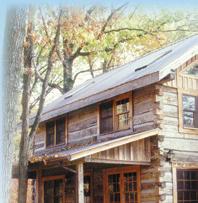

 ~by Ryan Stacy
~by Ryan Stacy
By now, it’s probably safe to say that Justin Furstenfeld has exceeded expectations. When he, his brother Jeremy, and some friends first dusted off their brand of catchy alternative rock as Blue October in Texas back in 1995, they probably didn’t foresee just how big they would blow up—or how long the explosion would reverberate. But Blue October ignited quickly, filling tour dates and recording albums at a pace that few bands could hope for. Within a few years, they’d
secured a deal with a major record label; within a few more, they were playing the late night shows, opening for the Rolling Stones, and getting very close to the top of album and video charts. And now, nearly three decades into their career, Justin Furstenfeld is still exceeding expectations, writing more songs than ever, keeping up a regular recording and touring schedule, and not giving any indication that any of this will slow down any time soon.
“Sobriety and gratitude,” Justin tells me when I ask him how he’s done it. Before getting sober eleven years ago, he says, he might have let Blue October’s success go to his head a little bit. “I took everything for granted, I led my life like an egotistical, ungrateful little brat,” he admits. But the different path he took changed all that.
“I’m just so grateful, so humbled that I’m able to take memories and feelings and make songs. I’m gonna stay right there, do this the rest of my life, jump on every opportunity one hundred percent, and spend the rest of the time with my kids. I’m the most successful man you’ll ever talk to,” he says of exceeding those expectations for himself.
With Justin’s attitude, Blue October’s songwriting changed too. For one thing, his
38 Our Brown County March/April 2023
3497 Clay Lick Road • Nashville, IN • (812) 988-2689 mikenickelslogcabins.com HONESTY • INTEGRITY • HANDCRAFTED QUALITY Building Fine Log Homes for over 40 Years
songs got a lot happier—which isn’t always an easy transition in rock music. “It’s hard to write about gratitude and peace” without coming across as cheesy or nerdy, he explains. “But I’ve only just tapped into it. I have so much more to write about.”
It may take a lot of hard work to be as happy as Justin is, but over several lineups in the band and eleven studio albums, Blue October have nailed down their process. After Justin and Eric Holtz, his writing partner, come up with a song, the band are given their assignments. “We’ll say ‘Okay, this day you’re coming in to do this part, and this day you’re coming in to do this part,’” says Justin. Everybody’s ideas are brought to his studio for recording, which keeps the music fresh and creative. The result: “We just write so much. The guys were like ‘Hey, can you narrow it down to maybe forty songs?’” he laughs.
That kind of songwriting volume isn’t a problem for Justin, though. It’s actually what’s fueling Blue October’s next three releases. And he won’t deprive his audiences of his newest material. “I can’t keep anything quiet,” he says. “I’ll always play my music
for them, and give them little insights as to what we’re about to put out.” But long-time fans can be assured that they’ll hear songs that go way back in Blue October’s repertoire too, Justin promises. “I’ve gotta play all those, because that’s what people love. These people have been coming to see us for twenty years.”
Covering all their bases onstage is why Blue October often plays for more than two hours every night on tour. To play less, Justin says, feels like he’s cheating people out of what they paid for their tickets. “Our manager’s always like, ‘Just play for an hour and twenty minutes!’” he laughs. “But we have so many songs, how do you make everybody happy?”

As for what we can expect on March 8 at the Brown County Music Center, Justin credits his road crew for making Blue October shows a top-notch production. “We just get up and jam, but without our crew it wouldn’t be any kind of show at all.”

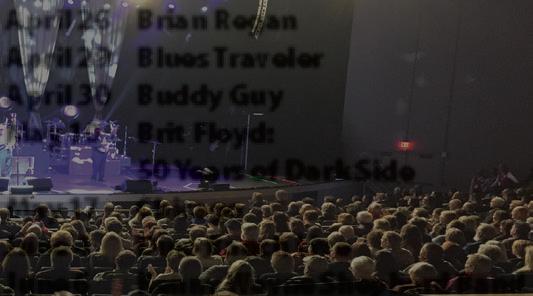


For more information about Blue October’s appearance at the Brown County Music Center, please contact the box office at 812-988-5323 or visit <www.browncountymusiccenter.com>.



March/April 2023 • Our Brown County 39 Brown County Music Center March 8 Blue Oc tober March 11 Nitty Gritty Dirt Band March 17 Girl Named Tom March 19 Scotty McCreery March 25 38 Special March 26 Lewis Black April 14 Cr ystal Gayle April 18 Cheap Trick April 26 Brian Regan April 29 Blues Traveler April 30 Buddy Guy May 10 Brit Floyd: 50 Years of Dark Side May 17 Chicago June 4 Dino Ranch Live June 6 Kenny Wayne Shepherd Band For additional shows and tickets visit: www.BrownCountyMusicCenter.com
Selma and the House of the Singing Winds
~by Julia Pearson
In the spring of 1907, Theodore Clement Steele made a trip to Brown County to look for property for a studio home. He preferred a tract of 60-plus acres about a mile and a half off the main road leading to Bloomington. In April he returned with his bride-to-be, Selma Laura Neubacher. The road was muddy with shelves of protruding rock. To make it easier on the horses, they climbed through the underbrush on foot. Theodore told Selma, “My dear, if you think you can manage to live in this wilderness, we will build our home here—on this hill.”
With the land purchased and local builder, Bill Quick, hired, Steele stayed in a one-room squatter’s cabin on the property to oversee construction of the house, while also working on a portrait of William Lowe Bryant.

Selma gathered items for the house design and made portfolios of stencils and drawings. Her eye for textiles and decorative arts gave her a distinctive flair.
Selma wanted a cellar built under the house— rather than a hillside pit. The studio, living and
dining rooms were one, 20 by 30 feet with a beamed ceiling 14 feet high. Selma’s fireplace was in the middle of the long south wall. Except for the plastering, all the work was done by Quick and his two assistants. One of the carpenters, Ogle, built the fireplace and his father built the throat of the chimney. Payroll was $17.50 per day for three carpenters, two grubbers, and two teams for hauling supplies.
On August 9, a simple wedding uniting Theodore and Selma was followed by a train ride from Indianapolis to their hilltop home. The bride wore a soft gray jacket suit of silk crepe and colorful hat. Arriving in Bloomington, they took a wagon to Belmont Hill where their neighbor, Mrs. Parks, asked them into her kitchen. The neighbor’s sons took the luggage to the Steeles’ new home and stabled the horse for them. Under nightfall, the Steeles walked the final quarter mile in wedding clothes. Forest trees edged their sleeping porch.
Water was had from a rain barrel and hauled from a well in Belmont, then stored in the cellar. The kitchen had no storage, with doors and windows
40 Our Brown County March/April 2023
“Selma in the Garden” by T. C. Steele.
in all walls and the cookstove occupying most of the floor. Selma secured Bill Quick to build open shelves and hang strips of wood for utensils. A closet door was reset to open kitchen-side for dishes and linens. Adjoining the kitchen were small bedrooms and dressing rooms. A screened eastside porch was used as a dining room. The screens caught the wind, giving the house its name: The House of the Singing Winds.
In a collection of old Gaelic tales that Selma had given Theodore for a birthday gift was the passage: “Every morning I take off my hat to the Beauty of the World.” Gustave Baumann, a leading artist in wood-block printing, carved this salutation over the Steeles’ fireplace—his only stone carving.
Selma opened their door to the curious who wanted to see the “under-the-house cellar,” kitchen cupboard, open fireplace, screened-in porches, and ventilated outhouse. Selma’s paisley shawl collection, the player piano, stuffed peacock, and endless shelves of books were exotic to behold. Adult men and women got down on all fours to feel and see up close the oriental rug in the great room.
Passionate for landscaping and gardening, Selma secured wagonloads
of manure and leaf litter to build the soil. Agricultural bulletins given to neighbors were used as fire starters or padding for their rag rugs. The formal garden and hillsides of daffodils inspired Theodore to paint garden and floral subjects.

At first, Theodore’s portrait painting made wintering in Indianapolis a logical pattern. But their hearts were with their Brown County hilltop. A neighboring farm was purchased, and additions made to the house.
The perfect studio was realized: a barnlike building with a gambrel roof and wall of north facing windows. Opened free to the public, Selma welcomed all visitors, as Theodore painted early in the morning.
Tragedy brought darkness to the Steeles in 1924. Selma’s sister Edith joined the household after several family deaths. Then an autumn fire spread across the hillside, threatening buildings and the house, prompting Selma to ban picnics.

Theodore died two years later on July 24, 1926, after a time of declining health.
During the Great Depression, Edith and Selma grew much of their own food and raised chickens. They charged 25 cents for studio tours and rented cabins to tourists. Selma sold six paintings to Indiana University in 1931.
Continued on 42
March/April 2023 • Our Brown County 41
All images from the collection of the Indiana State Museum and Historic Sites.
Selma and Theodore in the living room, circa 1910.
Selma and Theodore in a field of irises, by Frank Hohenberger.
SELMA AND THE HOUSE continued from 41












Dedicated to keeping her husband’s artistic legacy alive, a proposed agreement with Indiana University to take control of the T. C. Steele artist sanctuary fell through. Selma contacted Charles A. DeTurk, director of state parks, lands and waters. He was instrumental in the completion of a warranty deed and instrument of gift to the Indiana Department of Conservation on July 11, 1945. Selma and Edith continued to live in a portion of the house and kept a garden.
Selma Steele died on August 28,1945. Her sister Edith lived alone on the Brown County art sanctuary for nine more years.



The property is now known as the T. C. Steele State Historic Site, located one and a half miles south of Belmont, between Bloomington and Nashville, at 4220 T. C. Steele Rd., off State Road 46. There is a Singing Winds Visitor Center offering tours of the house and studio. The gardens have been restored and are a must-see in the spring.

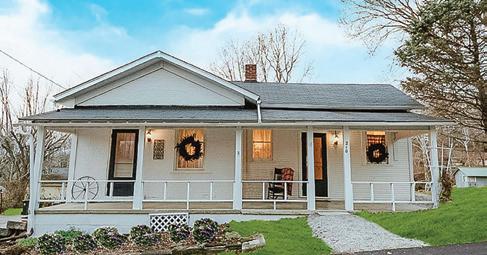
The book The House of the Singing Winds, originally published in 1966, and a revised edition by Indiana Historical Society Press, 2016, can be found in libraries and in Nashville at Fallen Leaf Books.



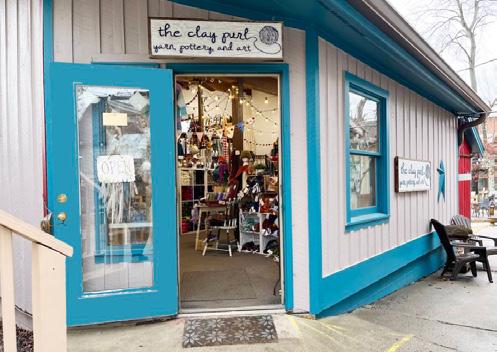
come see us in antique alley, next to brown county pottery online: claypurl.com 92 w franklin st • nashville, in • 812.988.0336 sunday 12-4, tuesday—saturday 11-5 Call, Book O nline, or Stop in! Like and Follow Us! 812.988.6554 • 30 Washington St. • Nashville, IN MoonDanceVac ationHomes.com * Log Cabins * Game Rooms * Pet Friendly * Hot Tubs * Private Pools * Lake Fronts Historic restored home dates back to 1840 Downtown Nashville–walking distance to shops/restaurants 2 BR, 1.5 bath | covered front porch | free parking | pet-friendly
1840 STAGECOACH
Selma poses in the patio garden, circa 1940.
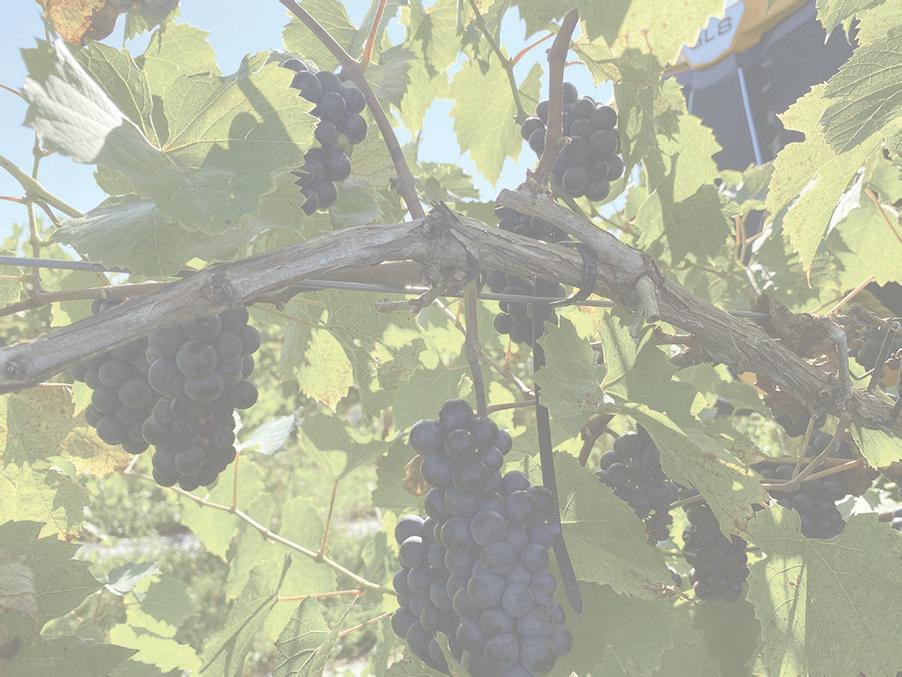






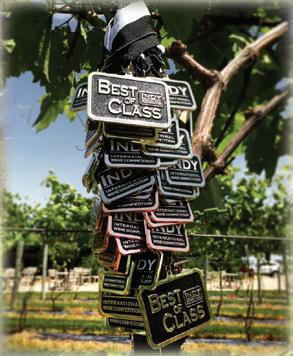
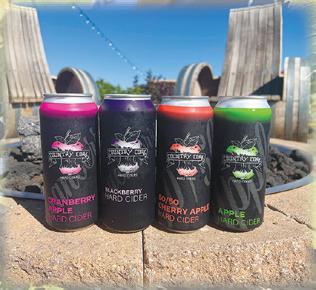
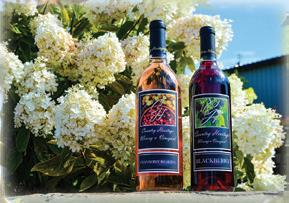
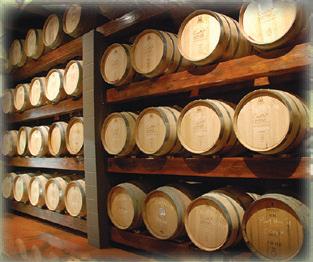




















March/April 2023 • Our Brown County 43 S. Van Buren & Washington, Nashville IN 812.988.8500 countryheritagewinery.com Wine Tastings Daily Award-Winning Wines Live Music Fri. & Sat. 6–9 pm Indoor & Patio Seating Hotel & Event Center www.seasonslodge .com w.seasonslodg e.c 812-988-2284
Across from the entrance to the BROWN COUNTY MUSIC CENTER located inside
If you want to rise to the gustatory heights, sometimes you’ve got to climb.
Accordingly, I made the journey up the hill on north Jefferson street to the Hotel Nashville, where, perched high above the Peaceful Valley, the new Nashville Chop House is drawing crowds with the finest quality locally sourced meats and house-made specialties.

It was a Saturday night, the parking lot was full, and so was the Chop House—one big dining room and a small bar. I got seated in the bar, but at a table, which was not so bad.
The bar, called the “wardroom,” has a military theme. A wardroom is the officer’s mess on board a warship and “mess” is what the navy calls the dining room. The Nashville Chop House is veteran owned and operated and the cozy bar room is covered with military memorabilia. I overheard the bartender relate that he was a veteran of both the Army and the Navy. It has a nice little horseshoe bar that seats about a dozen people.
The Nashville Chop House Sampler at
I like a good steak. I wish I could try everything on the menu, but alas, my days of hogging down huge portions of food are in the rearview. I wanted a nice juicy steak with a baked potato and a salad on the side.
But first, as I was seated in the bar, it seemed only fitting that I enjoy a cocktail apéritif, a digestive, as it were, and I had a hankering for an Old Fashioned, just like dear old Dad used to make.

I had in mind the shrimp cocktail for an appetizer, but I wanted to save digestive space for the main event. They also serve fresh bone-in wings, twice baked potatoes, and steak bites as appetizers.
Instead, I had a nice Chop House salad with fresh iceberg lettuce, diced tomato, cucumber, red onion, cheddar cheese and a home-made balsamic vinegar dressing. It was a nice big salad, and gave me something healthy to do while I awaited my steak.
There’s also a chef’s salad on the menu.
The Nashville Chop House serves a Fischer Farms “Can-Can Pork Chop—a glorious Tomahawk cut of pork loin with the belly attached.” There’s an “Aviator Chicken,” bone-in chicken breast with the drumettes attached, and even a fish of the week.
But my sights were set on a steak.
44 Our Brown County March/April 2023
Their menu states that the premium steaks are above prime cut, dry-aged “artisan style” beef from Legacy Maker Farm in Lafayette.

There’s a fourteen-ounce New York Strip and a Wagyu Denver steak in six and ten ounce iterations.






I decided on the petite filet mignon. I’ve grown to feel that six ounces of good steak is about right for me.
I couldn’t help but notice, about halfway through my meal, that the fella at the next table had ordered the ten-ounce filet, and I must admit that, for a moment, I was somewhat covetous. Story of my life—I always want what the other guy ordered.
Still, the steak I got was delicious; tender, moist and perfectly cooked the way I like it, which is a little more done than your average cook likes his meat. They tend to like it rare, and sometimes take a “medium well” order as an insult, or worse, a provocation.
You can order toppings: garlic butter, garlic mushrooms, blue cheese crumbles—but I wanted to taste just the steak.
It was very tasty and satisfying.

There’s something about being in a small space with a bunch of happy people on a weekend evening, having a few drinks, eating good food, that appeals to the social animal in us.

As my meal progressed, I began to get happier and more mellow, I felt that somehow, despite clear evidence to the contrary, all was right with the world. At least in that moment, at least then and there. I had been subsumed in a kind of steak nirvana.



If you are familiar with my methods and practices, you can probably surmise that I did not leave this meal until I had had a little bite of something sweet.
A slice of cheesecake covered in cherry goo did the trick. I took my time and savored it, and I was profoundly satisfied.

March/April 2023 • Our Brown County 45 Salted Nuts Roasted Daily Cinnamon Roasted Almonds & Pecans S.Van Buren (Shopper's Lane) Nashville Mail Orders - 812-988-7480 Cashews, Fancy Mix, Pepitas, Peanuts Delicious Candies - Homemade Fudge d C Mi Pit R M ain S tr t S ho es (Old S ch l Way) 59 E. M ain St . Suite G. • N ashv i e 812-398-8010 www.HollyPots.com Stoneware po er y handmade in Brown County, I ndiana
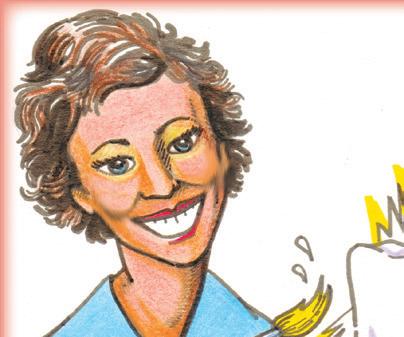



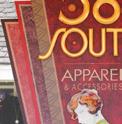






























46 Our Brown County March/April 2023 812-332-2000 • www.drlisabaker.net 4217 E. 3rd Street • Bloomington, IN 47401 Family Cosmetic Preventive Dentistry Dr. Lisa Baker, tooth artist and smile specialist Lisa J. Baker, DDS Call for an appointment today: Amazing While -you-wait Crowns! 812-988-8440 • f tyeightsouth@gmail.com 58 S. Van Buren St. • Nashville, IN 58 South Apparel Located in downtown Nashville next to the Brown County Playhouse Our accessories, hats, and comfor t shoes complete the out t or add new fresh looks to your wardrobe. You will find traf fic stopping items at 58 South! Established in 2005 — Alwa ys a trendsetter Today’s fashion Fit and a ordability for missy and younger-thinking shoppers. wearable ever y da y or for special occasions Located in the heart of downtown Nashville next to Out of The Ordinary and across from the Brown County Playhouse 69 S. Van Buren St. • Nashville, IN 812-988-2050 • rhondakays@msn.com Rhonda Kay’s Flags, Yard, & Porch Decor Woodstock Chimes • Spinfinity Tervis Tumbler • BruMate Swan Creek • Dixie Belle Paint Willow Tree • Sharon Nolan Melissa & Doug • Ty Plush Jeeps T’s • Simply Southern Bobble Heads • Boglins! Did we mention all the hats, scarves, and fashion jewelry? Our market fresh product selections are the result of your requests. We appreciate our loyal customers! .. A family- iendly pizza p lace In the hear t of Nashville by the Village Green area at the intersection of Main and Je erson Streets. AUTHENTIC NEW YORK S TYLE PIZZ A 140 W. Main Street • (812) 988-8800 PIZZ A • SALADS • CALZONES Dine -In or Carr y-Out Open 11am–9:00pm • Closed Mondays
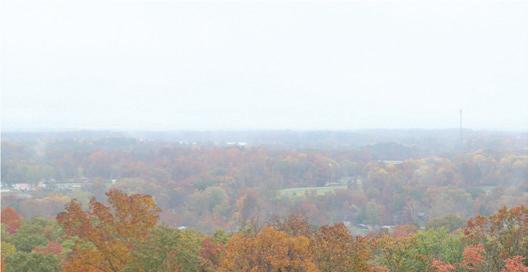














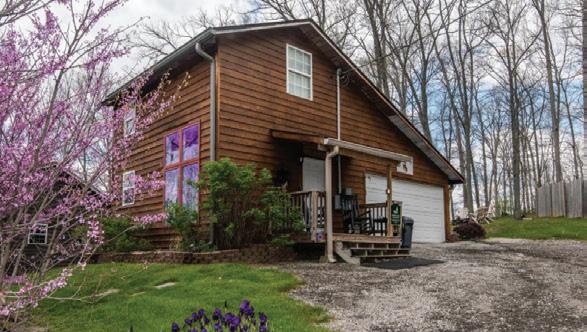




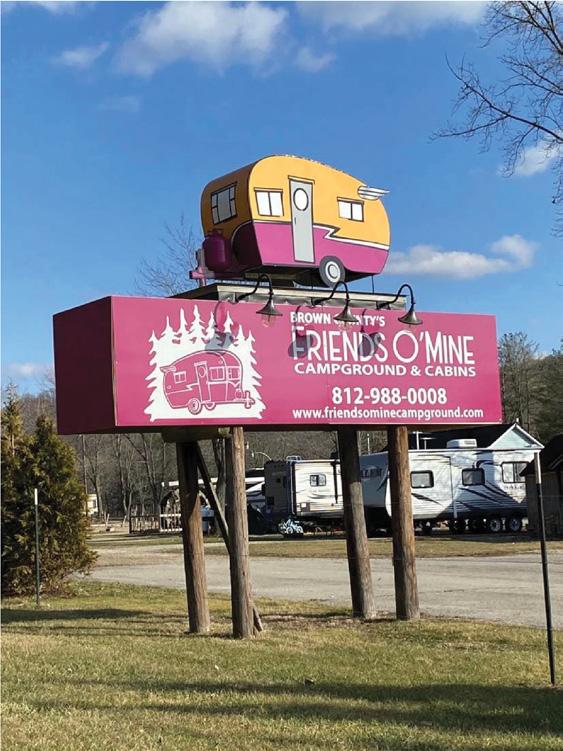


March/April 2023 • Our Brown County 47 Brown County Michael Rebman 104 S. Je erson St. • Nashville, IN 47448 812-988-4447 browncomassage.com Chair Massage: $25 • Table Massage: $85 Cer ti ed Therapist www.browncountylogcabins.com Your Headquarters for the Great Outdoors CAMPING SUPPLIES: Tents, Camping Lights, Sleeping Bags, Grills, Fire Star ters, Coleman Heaters & Lanterns, Cooking Utensils • Fishing Tack le • Horse Tack • RV Replacement Parts • Bee Keeping Supplies • Maple Syrup Supplies • Pet & Livestock Food • Antiques Salt Creek Plaza • Nashville (812) 988-8888 • ww w.BearHardware.com Mon.–Sat. 7:30am–7:00pm • Sun. 10:00am–4:00pm WE SELL & DELIVER BULK MULCH & TOPSOIL We Fill Propane Tanks 812-988-0008 4557 St. Rd. 46E, Nashville, IN 47448 Scan code to nd out more! www.friendsominecampground.com
Casey Winningham approaches stone carving with an artist’s passion and a historian’s sensibilities.

He repairs old headstones and makes new ones in the hand-tooled style of master carvers of the 19th century.
Previously a blacksmith, he began carving stone as a fulltime vocation about 20 years ago.
But the seeds of that passion were planted when he was only 10 years old, visiting his grandfather in the mountains of eastern Tennessee.
Winningham says his grandfather was the family historian, and he remembers a walk the two took in a family cemetery. The grandfather would point to a stone, with no name or dates on it, and tell Winningham which of his relatives was buried beneath it.
“I thought, Grandpa, when you’re gone, who’s going to know who’s under that rock?”
Years later, he said he “gave himself permission” to carve headstones for those family members, even though he was just beginning to learn the craft.
Casey Winningham Carving Stones

Though he lives in Owen County, Winningham has close connections to Brown County, as it holds some of his favorite spots for tramping through forests and streams, looking for fossils and geodes.
His best-known work in Brown County is a monument to Henry Cross, who created Stone Head in 1851 in Van Buren Township. The original sculpture—part folk art, part road marker and part historical artifact— was destroyed by vandals in 2016. Winningham was commissioned to make the monument.
48 Our Brown County March/April 2023
~story and photos by Bob Gustin
After carefully researching Cross’ artistic style and use of fonts, he finished the monument, made from stone which Cross himself had cut from a nearby quarry. Winningham was honored in 2017 at the Brown County Art Gallery’s collector’s showcase exhibition and sale.
Henry Cross created about 100 headstones in Brown County, and lived a few miles from Stone Head.

Jon Kay, director of Traditional Arts Indiana at Indiana University, says that in a lot of ways, the old stone carvers like Henry Cross served as Winningham’s mentors. Kay said it is appropriate that Winningham did the monument to Cross because he can see the way Cross carved lambs, willow trees, and other motifs, as well as the precise lettering.
“Casey pays homage to history and those techniques and also allows people to have a connection with someone who will make the thing that will actually outlast you,” he said.
Compared to modern mass-produced headstones, Kay said Winningham’s work is “a much slower, thoughtful process.”
Winningham has created or repaired thousands of headstones across the country, including two in a cemetery west of Nashville.
Seventy percent of his work is restoration, he said, at a pace of about 200 headstones a year. During winter months, he works on carving replacement or new headstones, though he says he prefers restoration work.
He came into the trade of stone carving much like he did other activities in his life, out of necessity. He would see an object he liked, but knew he couldn’t afford to buy it. If he wanted something like that, he had to make it himself.
Born and raised in the Muncie area, he worked first as an emergency medical technician. Then he moved to South Dakota where he took up blacksmithing. He moved from there to Ohio, and then back again to Indiana.
Things he learns about one type of artwork are often applicable in another area, he said. As a blacksmith, he
might create a gentle sweep in a piece of iron and later use that balance when carving stone.

After moving back to Indiana, Winningham didn’t have the workspace to continue his blacksmithing, so he was looking for another line of work when he saw a video by master stone carver Walter Arnold of Chicago. Geography also had something to do with the decision, since
Continued on 50
March/April 2023 • Our Brown County 49
courtesy photo
Monument honoring Henry Cross.
southern Indiana has some of the finest limestone in the United States. Carvers across the nation pay large shipping bills to have the heavy stones delivered to them; Winningham simply goes to the quarry and picks out the stone.
He describes himself as selfeducated when it comes to arts and crafts.
“I get real focused, or obsessed” with a topic, he said, and devours books on it, talks to people who are experts in the field, and immerses himself in the craft. Most of the space in his workshop is taken up with stone and the tools he uses to carve it. But it also holds evidence of his varied interests, including a detailed scrimshaw powder horn, carved pipestone, stained glass, a kachina doll in the style of southwestern Native Americans, and a miniature replica of Lewis and Clark’s wooden longboat.
He has shared his knowledge with other carvers, including Sidney Bolam, who lives in northern Brown County.
“As a fellow stone carver, we always enjoy talking shop,” she said. “I don’t do (much) lettering work, and that’s almost exclusively what he does. So, we always have a lot to talk about in regards to tools and techniques.”
Bolam said Winningham’s “gentle and introspective nature” makes him a good match for memorial work, and his study of historical techniques and styles makes
his process nearly as interesting as the final product.
Since about 1900, most headstones are sandblasted, not carved, Winningham said. At modern monument companies, computers are used to cut designs and lettering into a rubber mat which is placed over the stone before blasting. This results in uniformity.
“You lose all individuality, creativity and uniqueness,” he said.
“I have a hunger to reach out and look for new ways. I just want to continue to evolve in my craft until the day I die. People ask me why I don’t make my own headstone. If I would have made it seven years ago, I would now be so disappointed in it, because I keep getting better.”
More information: <caseywinningham@gmail.com> or <caseywinningham.com>.
Jon Kay, director of Traditional Arts Indiana, thinks it might be time to consider making a copy of the missing bust of Stone Head, and placing it on the original base.
“It’s been long enough now that it’s obvious we’re not going to find more pieces of it,” he said.
Though he was initially opposed to the idea of a replacement head, he said time has changed his mind.
“I would think of it more like the reprinting of a book rather than making a replica.”
Now, with 3-D printers and other modern technology, it is possible to reproduce a more exact copy of the missing head, Kay said. Such a venture would require crowd sourcing from lots of people, with as many as 500 photos of the original work, taken from every angle.
He said the marker, credited to Brown County stone carver Henry Cross in 1851, had been in a fragile state even before unknown vandals removed the head on Nov. 6, 2016.
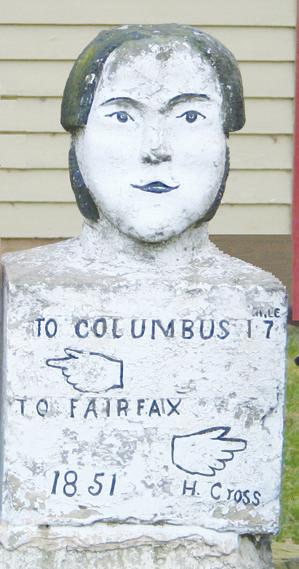
Cross created the Stone Head monument and mile marker as payment for a “road tax” when land owners were expected to work on new roads or pay someone to do it for them. He carved the head in the likeness of a township trustee at the time, and he may have carved similar markers which have since been lost.
Kay also believes the original marker may not have been solely Cross’ work, since the lettering and carving on it are not of the quality of headstones known to have been carved by him. Kay said Cross had several employees who worked with him, including his son, and they may have helped carve the original piece.
50 Our Brown County March/April 2023
WINNINGHAM
continued from 49
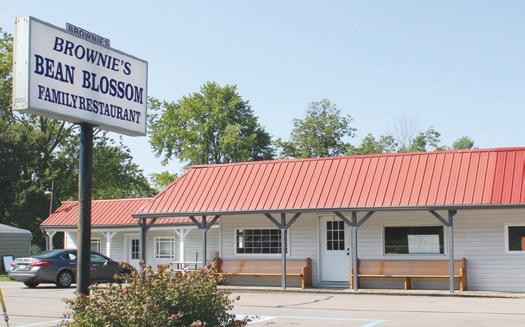


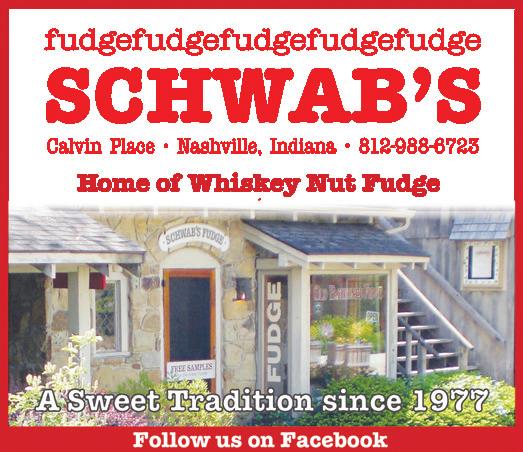


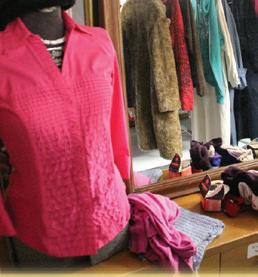







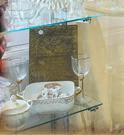














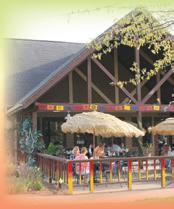






March/April 2023 • Our Brown County 51 5730 N State Rd 135 • Bean Blossom • 812-720-3743 Brownie’s Featuring some of your old favorites and some tasty new ones Daily Specials • Breakfast till 2:00 Dine In or Carr y Out 7 am to 8 pm • closed Thursdays Owners Paul and Tania Lattimore Selling gently used items to bene t Brown County. Accepting clothing and household item donations. Women’s boutique, kids and teen clothing, men’s clothing, and household items Tuesdays and Thursdays 10:00 to 5:00 Fridays 10:00 to 3:00 South Van Buren in Nashville (near stoplight, behind Subway) (812) 988-6003 Look for the signs Like us on Facebook at Brown County Community Closet, New Pizza & Wings, Groceries, Ice Large Selection Domestic/Craft Beer & Wine LOTTERY, Tobacco Products Camping Supplies, Live Bait & Tackle Hunting & Fishing Licenses Check Station, Firewood State Road 45 and Helmsburg Road Intersec tion • (812) 929-7797 Owners: Sharon & Leonard Richey Helmsburg GENERAL STORE Authentic Mexican Cuisine A 812-988-4535 Carr y Out Available COACHLIGHT SQUARE 101 E. Washington St. one block east of S. Van Buren St. (in front of the high school) in downtown Nashville •Daily Specials •Kid’s Menu Family Owned and Operated FULL BAR AVAILABLE
Field Notes
~by Jim Eagleman
Land Ethic
“There are some that can live without wild things, and some who cannot. These essays are the delights and dilemmas of one who cannot.”
These words printed in a book titled A Sand County Almanac, were written by scientist and biologist, Aldo Leopold. The book has occupied a prominent place in my library since I was first introduced to it as a student in the 1970s. Like Leopold, my professors knew the study of natural resources was more than just a discipline. Learning technical forestry and wildlife science was a human endeavor—how to work for the land and the people who inhabit it. We were to look for qualities any good manager should possess, not just those needed for wildlife and forest work. Good habits of a human resources manager, understanding how people act, how people live and work together, were also qualities for a natural resources manager. Psychology and sociology classes were requirements outside the school of natural resources. We learned how the human animal functions in its ecosystem.
Leopold graduated from Yale school of Forestry in 1909 and was first hired as an assistant forester for the U.S. Forest

Service. It was in this capacity he witnessed how western lands were utilized and impacted by livestock allowed to graze on federal lands. By 1922, he submitted a formal proposal for the Gila National Forest as a wilderness area.
Leopold saw conservation working only when applied with a deep sense of awareness. As we depend on nature for all living, necessary things—food, water, wood, oxygen—we must monitor our lifestyles in order to live compatibly with the natural world.

He said, “Like winds and sunsets, wild things were taken for granted until progress began to do away with them. Now we face the question whether a still higher standard of living is worth its cost in things natural, wild, and free. For us in the minority, the opportunity to see geese is more important than television, and the chance to find a pasque flower in bloom is a right as inalienable as free speech.”
During his time, geese overhead and a pasque flower (one of the first perennials to bloom in a Wisconsin spring), were still uncommon. Now, of course, we see geese everywhere in the Midwest, but the pasque flower may be one to add to our search list. Both occupy a place in the ecosystem. And though important in their own capacity, he mused, “What merits to mankind might they possess?”
Leopold’s acceptance, and maybe his appeal, meant being direct, to write what he observed, even of pending doom. He speaks with caution and an awareness of consequences. Resource exploitation and habitat destruction were already pressing issues.
52 Our Brown County March/April 2023
A Sand County Almanac was published in 1949. Leopold, a chair of new game management department at the University of Wisconsin, became disillusioned with man’s regard to the natural world. He said, “Conservation…is getting nowhere because it is incompatible with our concept of the land. We abuse land because we regard it as a commodity belonging to us. When we see land as a community to which we belong, we may begin to use it with love and respect.”
Leopold includes the human emotion of love. Can we love and respect the land the way we love and respect our spouse, our children? If I borrow something from the land, like I borrow something from a neighbor, ethically I am required to return it. Can I do this with the land?
Maybe not. To borrow something implies it’s returned unmolested and unchanged. But development of land means it will never be returned to its original state. In Brown County, we are obliged to

decide what land requires while meeting the public needs.
An idea of ecological conscience evolved on how to encourage mankind’s thoughtful existence with the earth. He called it the “Land Ethic,” reflecting a conviction of an individual’s responsibility for the health of the land. “Health is the capacity of the land for self-renewal and conservation is our effort to understand and preserve this capacity.”
I’ve often wondered if my professors knew what impact Leopold had. Understanding man’s existence with the natural world was an important lesson. They saw us as young and impressionable, while we were excited. Anxious to work in some capacity of natural resources, we were to be guided by Leopold’s words. What we gained from formal class lectures and labs was reinforced by our time afield and in the woods. But as any resource manager knows, it’s the people they work with, and for, that will determine how well we live on the land.
March/April 2023 • Our Brown County 53

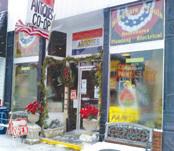























54 Our Brown County March/April 2023 10 miles north of Nashville on scenic State Road 135 Morgantown Visit ANTIQUES CO -OP Furniture, Ar t Architectural Elements Potter y The Odd and Unusual and A General Line (In the old hardware store building) Open 6 Days (Closed Mon.) 129 W. Washington St. • Morgantown, IN 46160 Countr y Primitives Adver tising Antique Garden Old Paint Early Smalls Like us on Facebook (812) 597-4530 Layaway Available www.GrandpaJeffsTrailRides.com • info@GrandpaJeffsTrailRides.com call or text (812) 272-0702 5889 S. Skinner Rd. Morgantown, IN AT LEAST TWO HOUR NOTICE TRAIL RIDES Grandpa Jeff’s Grandpa Jeff trained our horses to take exceptional care of your family and friends of all ages Reservations by phone TRAIL RIDES, Pony Rides, Hay Rides, & Custom Excursions Relax on a journey with Grandpa Jeff. Take in the scenery and wildlife. No two rides will ever be the same —sunny summer days, fall colors, winter snowfalls, spring blossoms uses real but ter and loca l/seasona l produce en tire menu is handmade 679 State Road 135 Morgan town 317-800-5625 GREEN HILL DINER














































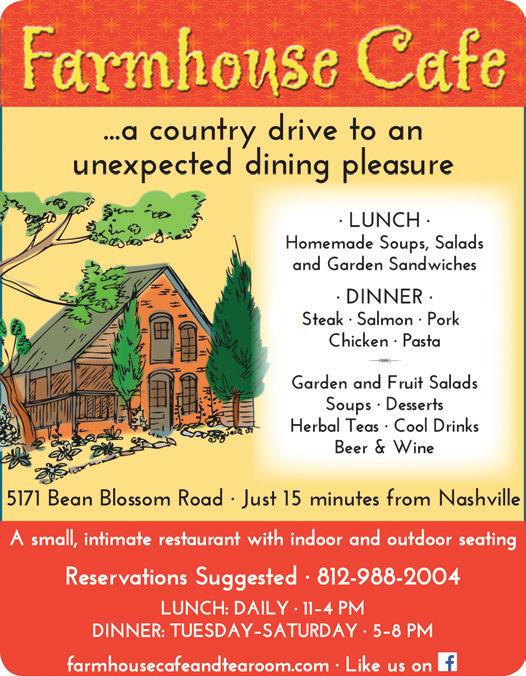


March/April 2023 • Our Brown County 55 State Roads 46 & 135 270 S. Van Buren St. in Nashville Nashville BP 812-988-1822 Fresh In-Store Donuts Broasted Chicken www.blitzbuilders.com 800-628-1324 “ Where Q uality is A ordable” Family owned for over 30 yea rs! WE DO IT ALL! Custom Horse Barns • Garages • Homes • Workshops Commercial Buildings • Metal Roo ng Your Post Frame Specialists Discount Code: Quality ally sourced & handcrafted Personal Care Products made from natural ingredients 145 S. Van Buren Street Nashville, IN Pamper Yourself with Mother Nature’s Gifts Ethica A female veteran owned company suppor ting other female and veteran suppliers 812-720-7018 • RedheadApothecar y.com Redhead Apothecar y Naturally balanced with natural products ...a country drive to an unexpected dining pleasure 5171 Bean Blossom Road • Just 10 minutes from Nashville A small, intimate restaurant with indoor and outdoor seating LUNCH Wednesday – Sunday 11 – 3 farmhousecafeandtearoom.com Like us Homemade Soups Garden and Fruit Salads Sandwiches Desserts LUNCH Herbal Teas • Cool Drinks Beer & Wine









56 Our Brown County March/April 2023 812.988.6555 | BrownCountyPlayhouse.org Showtimes, tickets & schedule online UPCOMING LIVE EVENTS! Dogs of Society The Ultimate Elton John Rock Tribute March 4 at 7:30pm Parrots of the Caribbean The Music of Jimmy Buffett March 11 at 7:30pm The Woomblies Rock Orchestra March 18 at 7:30pm Sounds of Summer The Music of the Beach Boys March 25 at 7:30pm O’Shea March 31 at 7:30pm American Fools The Music of John Mellencamp April 1 at 7:30pm Over The River And Through The Woods April 7, 8, 14, & 15 7:30pm April 8, 9, & 16 2:30pm Riders In The Sky April 27 7:30pm APRIL 7, 8, 14, & 15 | 7:30pm APRIL 8, 9, & 16 | 2:30pm abe martin lodge brown county state park nashville CAbins - Lodge Rooms Aquatic Center IndianaInns.com 1.877.LODGES 1






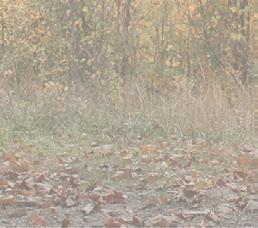
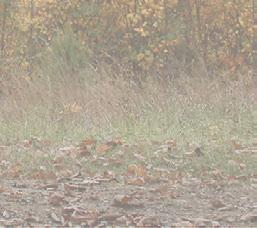

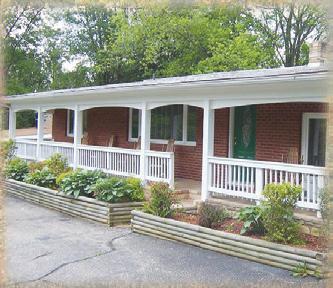
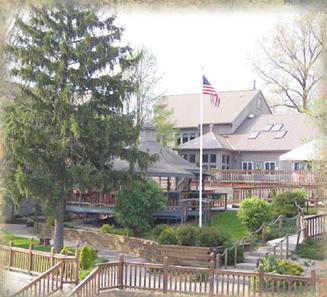

March/April 2023 • Our Brown County 57 245 N. Je erson St. | 812-988-8400 |800-848-6274 www.hotelnashville.com 194 N. Van Buren St. | 812-988-6429 www.nor thhousegetaway.com BRICKLODGEN HOORTHHOUSE TELNASHVILLE 1878 N. State Rd. 135 | 812-988-6429 www.bricklodge.com Suites, Studios, Restaurant & Bar Hot Tubs, Indoor Pool, Whirlpool Weddings & Receptions, Special Getaway Packages Accommodates 8 Guests, 2 Bedrooms & 2 Baths Game Room w/Pool Table, Cable TV, DVD Player Full Equipped Kitchen, Central Heat & Air Gas Fireplace, Outdoor Hot Tub, Gas Grill Accommodates 8 Guests, 3 Bedrooms & 2 1/2 Baths Cable TV, DVD Player, Fully Equipped Kitchen Central Heat & Air, Elec tric Fireplace Secluded Hot Tub, Gas Grill BrownCountyGetaways Indiana’s Oldest Toy Store (812) 988-2817 • www.BrownCountyToyChest.com All the best in games, puzzles, dolls, crafts, science kits, and more. 125 S. Van Buren St • Nashville, IN (in the Artists Colony Shops Complex) $5 at rate shipping on $50+ orders Play for All Ages • 10,000+ items in the store
Brown County Antique Mall
~story and photos by Paige Langenderfer
Many people spend so much time at work that it begins to feel like home. But for Cheri Sumter, work literally is her home.
When she bought the Brown County Antique Mall 28 years ago, Cheri was looking for a fresh start. She had just finished a 30-year career at the phone company in Indianapolis and was ready for a change. When she heard the mall was for sale, Cheri jumped at the opportunity.

“I bought the property as a residence and a business,” she said. “The main floor is an antique mall and the second floor is where I live.”
The property, located 3 miles east of Nashville on Indiana 46 East, had been operating as an antique mall since 1972, but Cheri knew nothing about running an antique mall.



“It was all new to me,” she said. “I was in my 40s, I didn’t collect anything and I had never run a business. But, I was motivated to learn.”
She divided the property into spaces that antique sellers could rent. “A lot of people think that it is all one big store and that I own
58 Our Brown County March/April 2023
and sell everything,” Cheri said. “The reality is that there are dozens of merchants selling items.”
The Brown County Antique Mall has about 75 spaces that merchants can rent.
“In 28 years, I’ve never had an empty space,” Cheri said. “I always have a waiting list of people that want to rent a space.”
Sellers mostly live in Brown County and surrounding counties, but Cheri said she has had sellers from as far away as Pennsylvania, Vermont, and Chicago. One current seller lives in Ohio.
“It really is an interesting business,” she said. “Some people only have a space in our mall, but several of them have spaces elsewhere. One seller has 28 spaces across the state. People have different reasons for doing it. Some people like the hunt for items. I even had one lady who was a dumpster diver.”
Sellers pay a monthly fee for a space in the mall.
“It is their own business inside the mall,” Cheri said. “Each space has a sign to show the name of the seller. They set up the space. They price the items.”
Three of Cheri’s grandchildren rent spaces in the mall.
“I am teaching them about the business,” she said. “It is a good learning experience for them because they are learning about money and investing and just business in general.”
The mall employee works at the counter and checks out customers.
“Each seller has an assigned number,” Cheri said. “That number is on each price tag so that we know who the sale goes to.”
Items for sale mostly fit into two categories: antiques and collectibles.
“People collect everything. I always say, if I grew up with it, it’s a collectible,” said Cheri, laughing. “A lot of people don’t realize that an item has to be more than 100 years old for it to be considered an antique.”
While she has never considered herself a collector, Cheri said she has grown to appreciate the stories behind the items.
“History was my worst subject when I was in school,” she said. “But when you talk about the items that people used in their homes and in their everyday lives, it puts a whole new spin on history. Now, it’s my favorite subject.”
As she approaches her 30th anniversary in business, Cheri said talking with customers is still her favorite part of the job.
“I love talking to people and learning where they’re from, what they do and what they collect,” she said. “I have many repeat customers and long-time customers and it has been fun to see them over the years. Some even come back with their kids and grandkids years later.”
Some customers buy items to decorate their homes, while others buy items to add to a growing collection.
“It just really is a very interesting business,” she said.
“Everyone has a very unique reason for why they want an item.”
While most customers are relatively local, Cheri said a handful of celebrities have visited the mall including various Indiana governors and their wives.

“Tony Stewart stopped and bought fishing lures,” she said. “And (Hollywood producer) Jerry Bruckheimer’s wife came in. She had a whole entourage of bodyguards with her. She was renovating a space and needed some items to decorate with.”
Cheri said she has no plans for retirement and is always thinking of ways to grow the business.
“Every year, I’ve tried to do something to enhance the mall. I have added additional rooms, built two additional buildings, and built a two-story, five car garage for storage,” Cheri said. “I always want to continue to grow and learn.”
The Brown County Antique Mall is open 362 days a year, every day but Christmas, Thanksgiving and Easter.
For more information, visit <www.browncountyantiques.com>.
March/April 2023 • Our Brown County 59
Cheri Sumter with her husband and partner Terry.
























60 Our Brown County March/April 2023 BROWN COUNTY 30 Hawthorne Dr. • Nashville • East SR 46 at light • 812-988-4546 Home town Proud L ocal Grocer y Store Serv ing Beautiful Brow n County Since 1975! • Organic Grocer y • Dair y • Produce • Frozen • Wine Ever-Growing Selec tion of Gluten-Free Products • Cer ti ed Angus Beef • Large Beer and Wine Sec tions • Picnic S upplies • Full Ser vice Baker y/Deli • Custom Cake Decorating • Custom Deli Trays, Veggie Trays text to NASHVILLE 99000 FOLLOW US ON FACEBOOK TO GET T HE WEEKLY AD Brown County IG A TIME-LAPSE VIDEO TREE REMOVAL TRUSTED • SAFE • EFFICIENT FREE ESTIMATES (812) 824-3335 Residential and Commercial Tree Care Services 8 CERTIFIED ARBORISTS
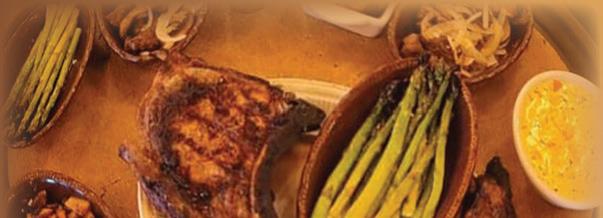
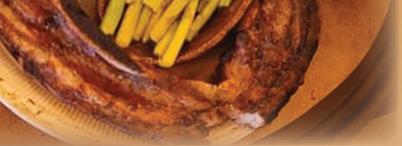
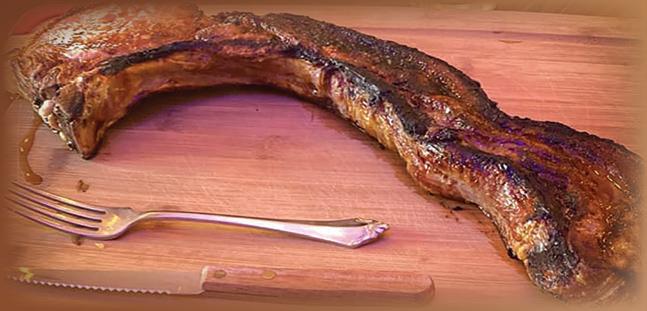
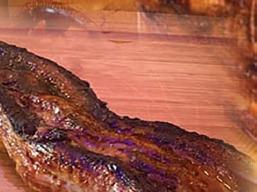





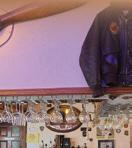


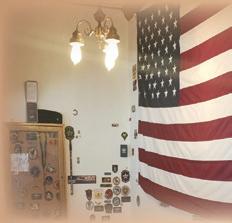

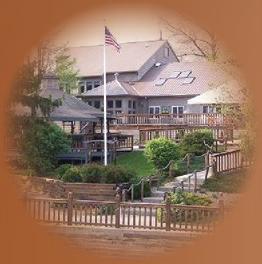

March/April 2023 • Our Brown County 61 The Nashville CHOP HOUSE D cover what people e talking about ve ter an-owned with military décor upsca le restaur an t & bar featuring prime steaks and seafood fine wines, bourbons, and spirits await • open l ate Inside Hotel Nashville 245 N. Jefferson Stree t 812-320-5411 www.thenashvillechophouse.biz freshest, mouth-watering ingredien ts serving dinner daily





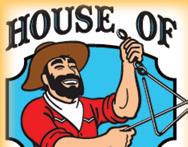



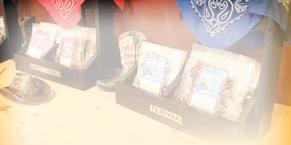


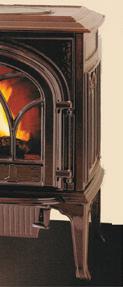


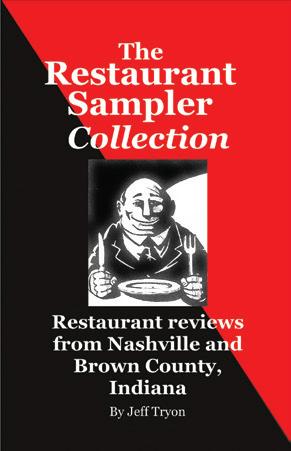




62 Our Brown County March/April 2023 11 flavors of BEEF 3 flavors of TURKEY 3 flavors of BEEF BRISKET 4 flavors of BEEF STICKS 2 flavors of PORK 2 flavors of BACON Also: Elk, Boar, Buffalo, Venison, Gator, Rabbit, Salmon, Kangaroo, Turtle, Ostrich, Trout, Camel, Python, Ahi Jerky Seasonings & Dips • Peanuts Nashville, IN • (81 2) 988-1592 125 S. Van Buren St. Artists Colony Shops (Between Toy Chest and Carol’s Gifts) houseofjerkybrownco.com THE FIREPLACE CENTER 812-336-2053 1-800-344-3967 BloomingtonFireplaces.com • Wood Stoves and Inser ts • Gas Stoves and Inser ts • Fireplaces Your rst step to Energy INDEPENDENT LIVING Complete line of : 1210 W. 2nd St. Bloomington Looking for a good place to eat? Curious about the dining scene? Now on sale at: Fallen Leaf Books Brown County Visitors Center Amazon.com Suppor t local business The Restaurant Sampler Collection Also available on Scrapbooking & Rubber Stamps 41 S. Van Buren St. • Nashville Heritage Mall Owner: Marlene Miller 812-988-7009 wishful.thinking@att.net www.wishfulthinking-in.com NEW LOCATION







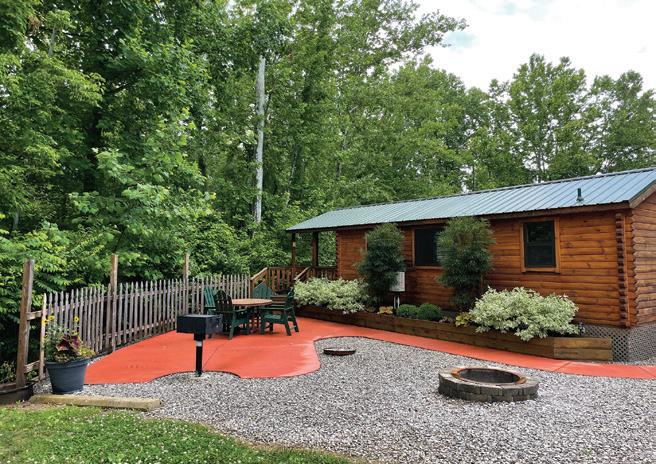




March/April 2023 • Our Brown County 63 at the ne wly renova ted Come spend quality me wi th family or friends in Beau ful Brown County KOA • Rustic tent sites in the tall trees • Variety of cabins • Back in and Pull thru RV Sites We have options to fit your camping st yle: Some thing for ev er ybody! Ac ro from the Brown County State Park entrance and the Sa lt Cr k G olf Course 2248 State Road 46 East • Nashville, IN BROWN COUNTY Info: 812-988-4675 • Reser vations: 800-562-9132 • koa.com/campgrounds/brown-county/ WIFI • Cable TV Pool open Memorial WeekendLabor Day Weekend A perfec t base to explore a Nashvi e , I ndiana has to o er







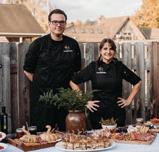



64 Our Brown County • March/April 2023 INFO PAGES EY E C ARE Checking eyes in Brown County for over 50 years! 50 Willow Street • Nashville, IN 812-988-4937 AU TOTIRE, REP AIR, TO W TIRE AUTO Repair & Br own County Tire 24 hr. Wrecker Service 812-988-8473 27 Salt Creek Rd (Intersection SR 46) Nashville $2 Bag • Salt Creek Plaza • Nashville Mon.–Sat. 7:30 am–7:00 pm, Sun 10:00 am–4:00 pm BA GGED TRASH DROP OFF A CC OUNTING & PA YR OLL • Individual Income and Business Taxes • Business Set Up • Business Financial Statements • Payroll Preparation and Payroll Taxes (812) 988-4031 • www.precisebooksandpayroll.com Locally owned since 2010 138 S. Je erson St. Suite C • P.O. Box 953 Nashville, IN 47448 Plum Creek Antiques Open-Air Market Bean Blossom 5 minutes nor th of Nashville (intersection of SR 135 & SR 45) • Fruit Jars • Garden Ar t • Furniture • Iron Things, • Lots of Junk and more (812) 988-6268 ANTIQUES A CC OUNTING / TA X PREP ZIEG LeDOUX & ASSOCIATES INC. (812) 988-2865 bruce1040@sbcglobal.net 64 W. Gould St. • P.O. Box 565 • Nashville, IN Tax Preparation, Tax Planning, Bookkeeping, and Payroll CHEFCRAFTED FOOD 812-318-1356 • www.bonafidebites.com C ONSTRUCTION













March/April 2023 • Our Brown County 65 INFO PAGES HEAL TH INSURANCE McGinley Insurance Agenc y, Inc. 947 2nd St. Columbus, IN 47201 christy@mcginleyinsurance.com • www.mcginleyinsurance.com Call/Tex t 812-988-6399 You do not have to wait until the Annual Enrollment period to enroll. Call Christ y today to see how she can help! Medicare Supplement Medicare Advantage Prescription Drug Plans • Are you on Medicaid & Medicare? • Do you have a chronic condition and need better coverage? Indiana Seamless GUTTERING Free Estimate s Matt Hunter GUT TERING Quality Work manship since 1992 Fully Insured Gutter Cleaning and Leaf Cover Available 812-344-4167 Continued on 66 HEAL TH C ARE Board Certi ed Family Practice Behavioral Health Ser vices Nashville, IN • 812-200-8265 Lawrence Sanchez, MD www.blueelkfamilyclinic.com • Check us out on Facebook Accepting new patients. S ame day appointments. Pay with c ash/credit card/debit card/insurance HEAL TH & LIVING • Mulching - Seeding • Weeding - Pruning • Tree / Shrub Planting • Fences - Walk ways • Retaining Walls • Mowing / Trimming • Flower / Herb Beds We Can Do It All! (812) 988-7232 NEED HELP? Complete Landscaping/ Design Services LANDSC APING TA TT OO TIM RUPP • More than 25 years experience Next to House of Thunder 4413 State Road 46 East Nashville, IN (Gnaw Bone) (812) 988-4054 TRASH SER VICE

































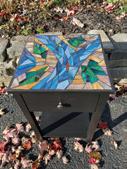
66 Our Brown County • March/April 2023 INFO PAGES WELLNESS 812-988-9622 • www.browncountyymca.org FOR YOUTH DEVELOPMENT FOR HEALTHY LIVING FOR SOCIAL RESPONSIBILIT Y BROWN COUNTY YMCA Open 5:30 am Mon.–Fri., Sat. 7:00 am, Sun. noon Swimming Pool Fitness Center Gymnasium Exercise Classes Personal Training Swim Lessons Day Camp Climbing Wall BUY 1 GUEST PASS, GET 1 FREE 1 per person, expires 12/31/23 Continued from 65 SIGN MAKER • HOMES • BANNERS • BILLBOARDS • STORE FR ONTS BOATS • TR UCKS • MURALS • LOGO DESIGN • All Types of SIGNS by CHRIS A. SHUSTER 812-822-2933 • RamblinDogDesign@gmail.com SIGNS THAT DELIVER: Digital Print & Vinyl to Hand Lettered, Carved & Gilded HEAL TH C ARE New patients always welcome 812-200-8265 www.blueelkfamilyclinic.com Broker/Owner Cell: 812-360-4083 margd@remax.net Marg DeGlandon CSSS, CDPR 10 Artist Drive, P.O. Box 1609 • Nashville, IN 47448 812-988-4485 www.2LiveInBrownCounty.com RE/MAX Team is Your Brown County Team REAL EST AT E REC ORDINGSTREAMING Home of The Stream each Friday night on Facebook and YouTube RainwaterRecordingCompany.com RainwaterRecordingCompany@gmail.com Full service content creation and live streaming studio RADIO Listen at 103.7 FM or stream at w u.org RADIO Tune in to your community! 91.3 FM South Central Indiana • 98.1 FM downtown Bloomington 100.7 FM Nashville • 106.3 FM Ellettsville Also stream wfhb.org • 812-323-1200 AR T Available at Spears Galler y in Nashville, IN South Van Buren Street next to the Nashville House 812-988-1286 One-of-a-kind Designs


nashvillespicecompany.com In Coachlight Square • 227 S. Van Buren St. • Nashville, IN 47448 • 812.200.1069 Scan to Shop! NO SALT. PLENTY OF FLAVOR. Along with our traditional handmixed spice blends, nearly 100 of our blends are salt-free!
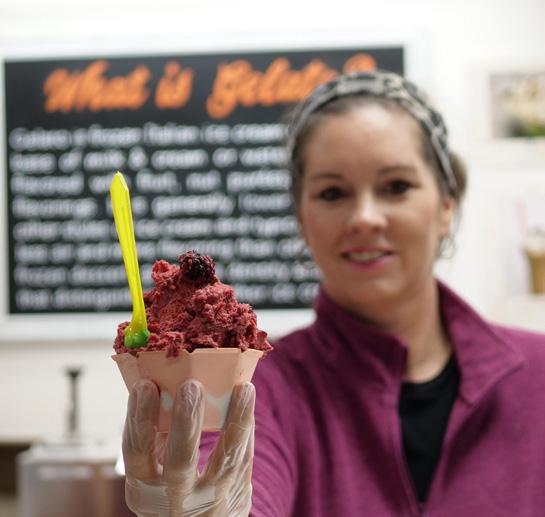





Sign Up Save 15% Corporate Gifts Wedding Favors Custom Gifts 175 S. Van Buren St. Nashville, IN 47448 812.988.0709














































































































































































































































































































 photos by Anne Ryan Miller
photos by Anne Ryan Miller











 ~by Ryan Stacy
~by Ryan Stacy






























































































































































































































































































































































































